Last Updated on July 28, 2023 by
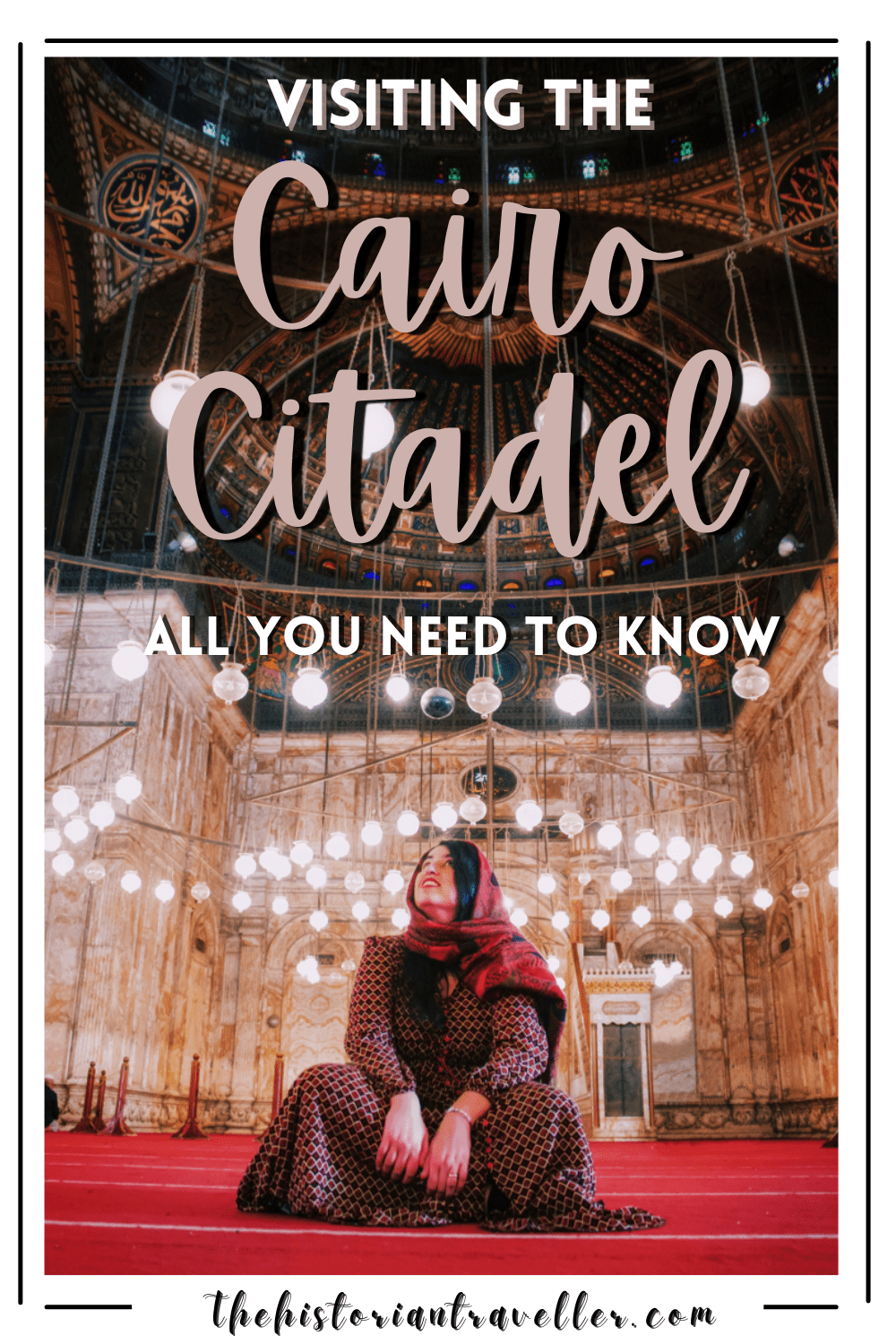
Situated at the top of the Mokattam Hill, the Citadel overlooks Cairo since the early Middle Ages. Visiting the Cairo Citadel is one of the best things to do around the area of Islamic Cairo. Here you can find some of the best examples of Islamic architecture and probably the best view of the city. If want to make sure you get the most of your visit and discover what to see at the Saladin Citadel, this is the guide for you! Here, I’ve included everything you need to know for a perfect detour. Especially, the history of the Citadel, what places to visit, practical information and so on. So, let’s start!
If you are planning a longer visit to Islamic Cairo, you can check a complete independent walking tour guide here
Table of Contents
History of the Citadel
The original name of the Citadel is قلعة صلاح الدين romanized as Qalaʿat Salāḥ ad-Dīn that means “Citadel of Saladin”. Today is know also with different names as “Cairo Citadel” or “Citadel of Muhammad Ali”.
Who is Saladin?
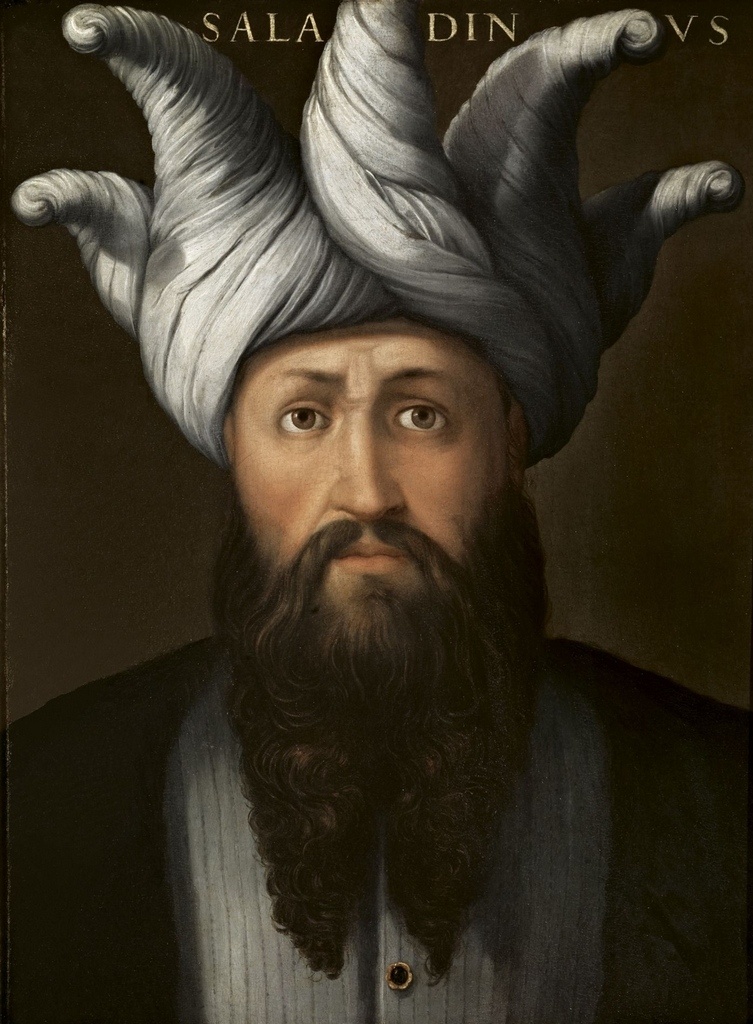
In the far 1169, An–Nasir Salah ad-Din Yusuf ibn Ayyub best known as Saladin became vizier of Egypt. Despite being known as one of the most famous strategists and warlords of the world history, Saladin was not so popular during his time. In fact, historical bibliographers of the middle ages describe him unpleasantly. Indeed, he was portrayed often as too weak or too young to be obeyed by his commanders. Nevertheless, thanks to the defeat of the Templars in Damietta and Eliat, he was able to acquire strength, admiration and public consensus.
The man described as “weak” was actually a well-hidden shark, ready to strike unexpectedly. As a real-life Jafar, his main ambition wasn’t that of being a simple vizier or warlord under the command of the Fatimid dynasty. In fact, he wanted the Fatimid caliphate under his rule. In 1171, with an act of strength and oppression against the rebels, he posed an end to the centenary Fatimid rule. He became the Sultan of Egypt and established the first Ayyubid Dynasty in the country.
The planning of the Citadel
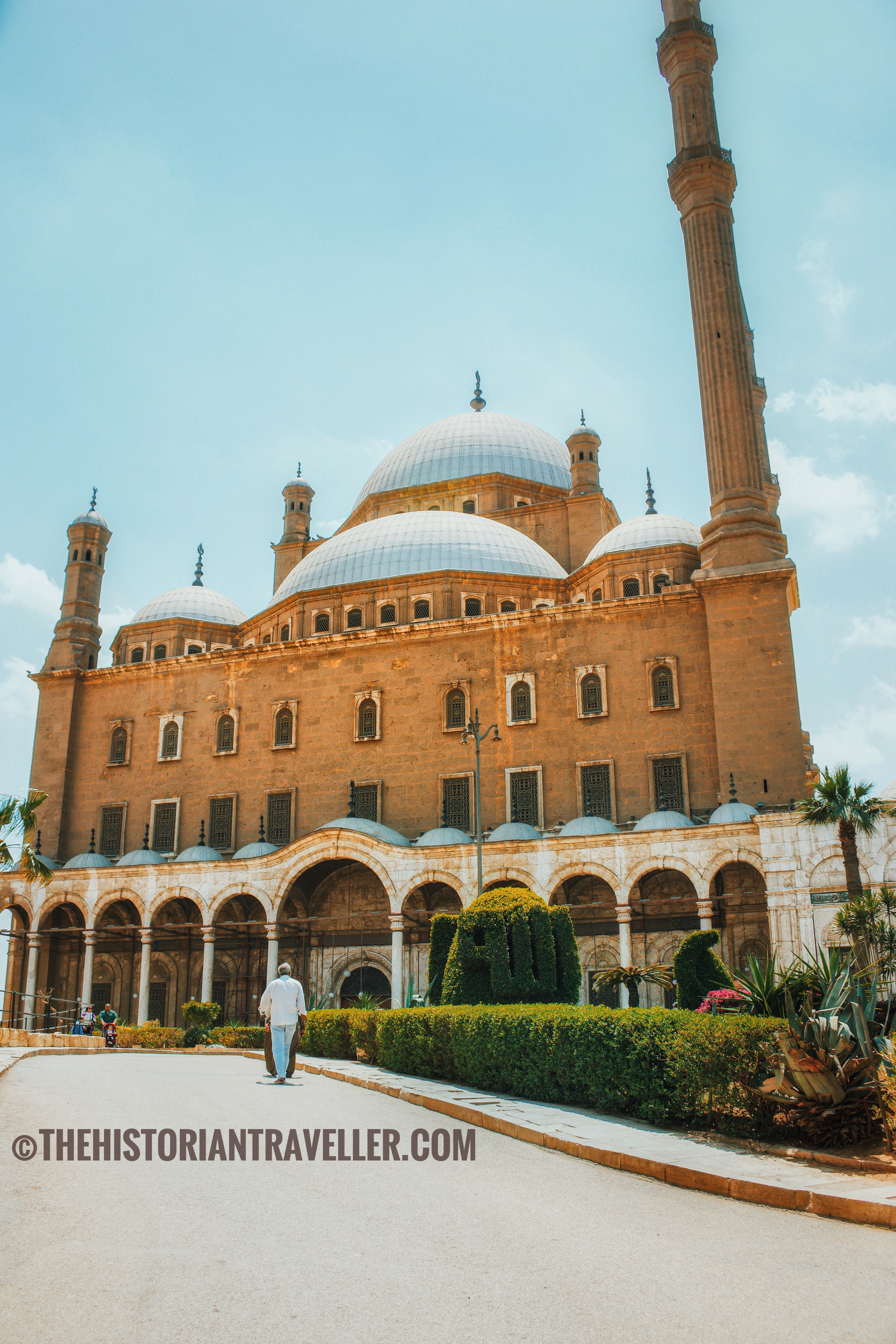
To defend the cities of Fustat and Al -Qahirah (at that time capital and administrative centre of Egypt in what is now modern-day Cairo) from the Crusaders, Saladin built a fortified city difficult to reach and attack. Moreover, his ambitious plan included also the creation of a belt wall surrounding both Fustat and Al-Qahirah as part of a unique military territory. The citadel construction started in 1176 and, according to Saladin’s vision, it was the “centrepiece and heart of the Egyptian government”.
His main inspiration were the typical structures of the military citadels built in Syria and Palestine. Those having huge fortified walls and princely residences within the administrative protected centre. The huge Medieval walls arriving nearby Al-Azhar park are the only surviving part of this ambitious project. Look up for a double-headed eagle at the top of one of the walls facing the west side of the citadel. This is attributed to Saladin!
The Ottoman Period
Following the Saladin rule, new modifications affected the Citadel. Particularly, enlargements and division into northern and southern enclosures. Although nothing changed from a structural point of view until the Ottoman rule, additional buildings rose into the central structure of the Citadel. Under the Ottomans (1517-1798), three new divisions were built: the barracks of the Janissaries (Ottoman army), the residence of the Al-‘Azab (local troops) and the residence for the pasha and troops from Instanbul. The Citadel changed again his face when Muhammad Ali Pacha decided to demolish all the former Citadel buildings to build a huge mosque and several other palaces.
The Citadel today
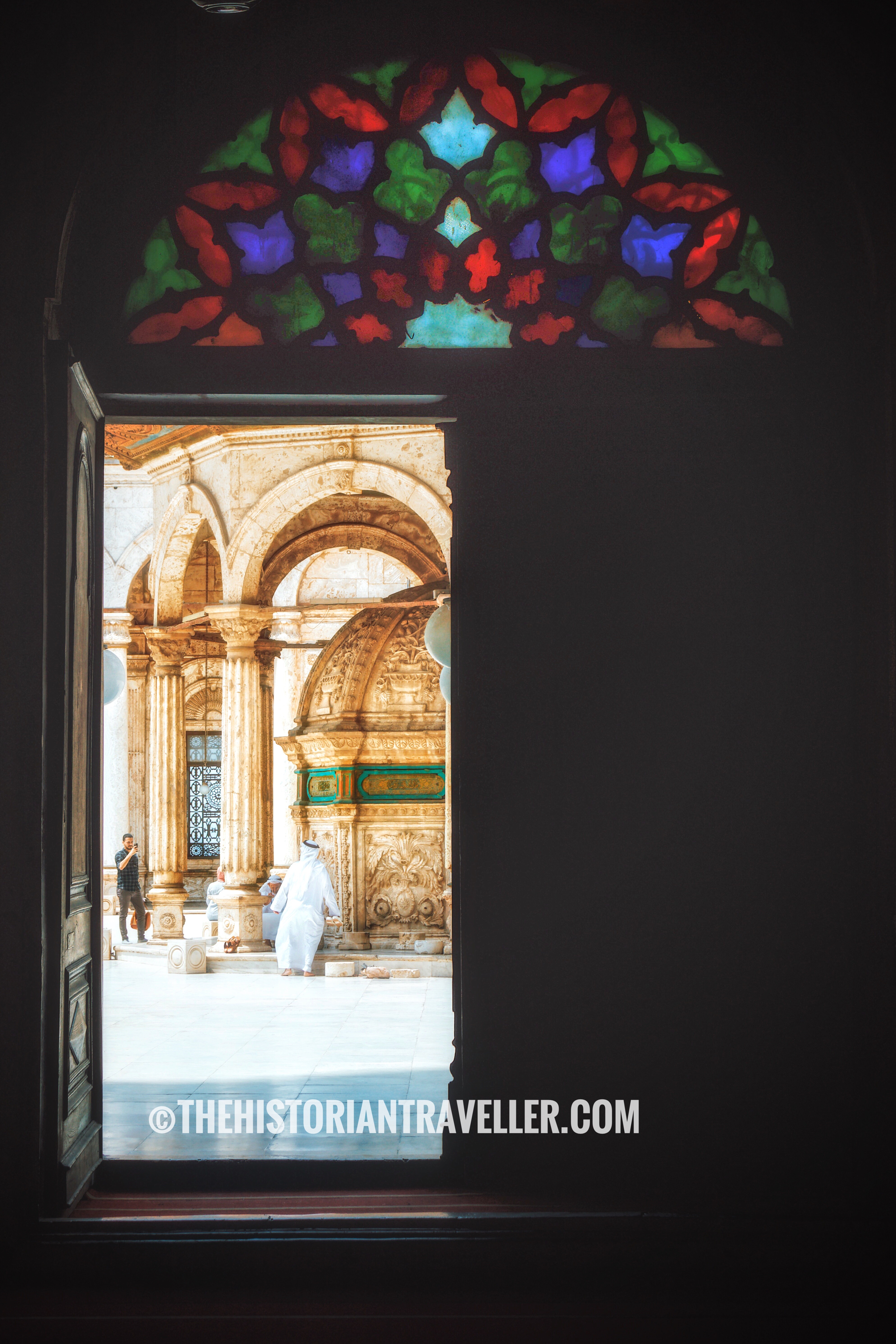
Despite a brief period under the British occupation during the great war, the Citadel remains almost unchanged since the last great modifications made by Muhammad Ali. Its large architecture features two large enclosures on the high platform and a lower one between the western boundary and the open area. There are three main gates. These are inspired by the medieval gates of Cairo. Furthermore, there is a large wall dividing the upper platform from the lower area. Most of the areas are open to the public and the open courtyard of the Muhammad Ali Mosque is one of the best place to enjoy a bird-eye view of old Cairo.
Map of the Cairo Citadel
For your convenience, I enclosed an updated map of the Saladin Citadel below. I’ve highlighted in red the main mosques open to tourists. The original map is in french and you can find it in wikipedia here. Because there isn’t any available online map in English, I’ve updated the french one.
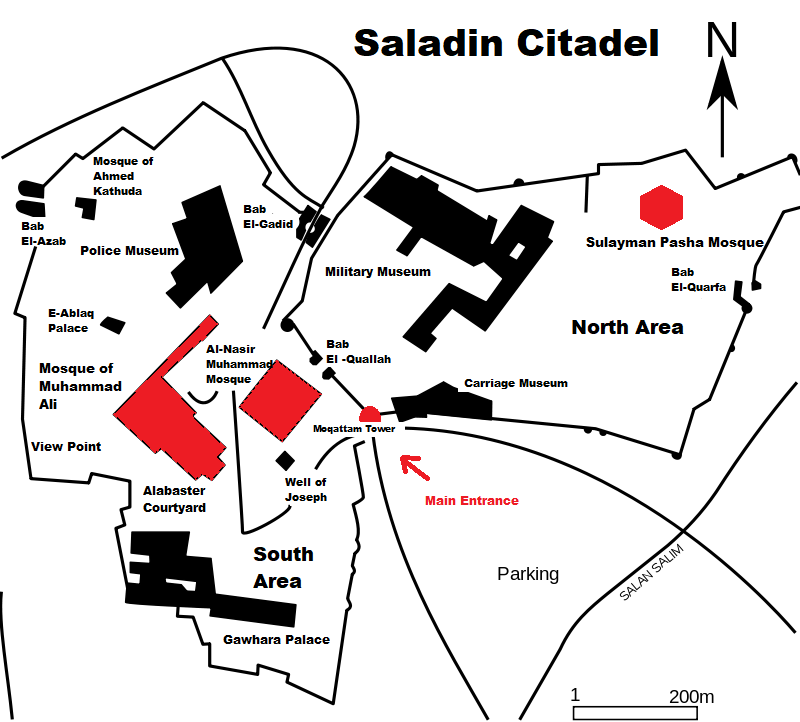
Quick facts you need to know about the Cairo Citadel
- The original structure of the Citadel, (the one commissioned by Saladin), dates back to 1176-1183 AD
- The Citadel was the “administrative” home of the Egyptian rulers for more than 700 years
- Because its original scope was that of being a defensive structure against the Crusaders, the Citadel was built in one of the highest point of Cairo.
- The Citadel is a UNESCO World Heritage site since 1979
- Many people confuse the citadel with the Mosque of Muhammad Ali. Nevertheless, the mosque dates back between 1830-1848 and it’s now part of the already preexisting structure.
- There are three mosques inside the Citadel and also three museums
- The Citadel is one of the most famous landmarks in Cairo, after the pharaoh-related monuments.
Practical information for visiting the Cairo Citadel
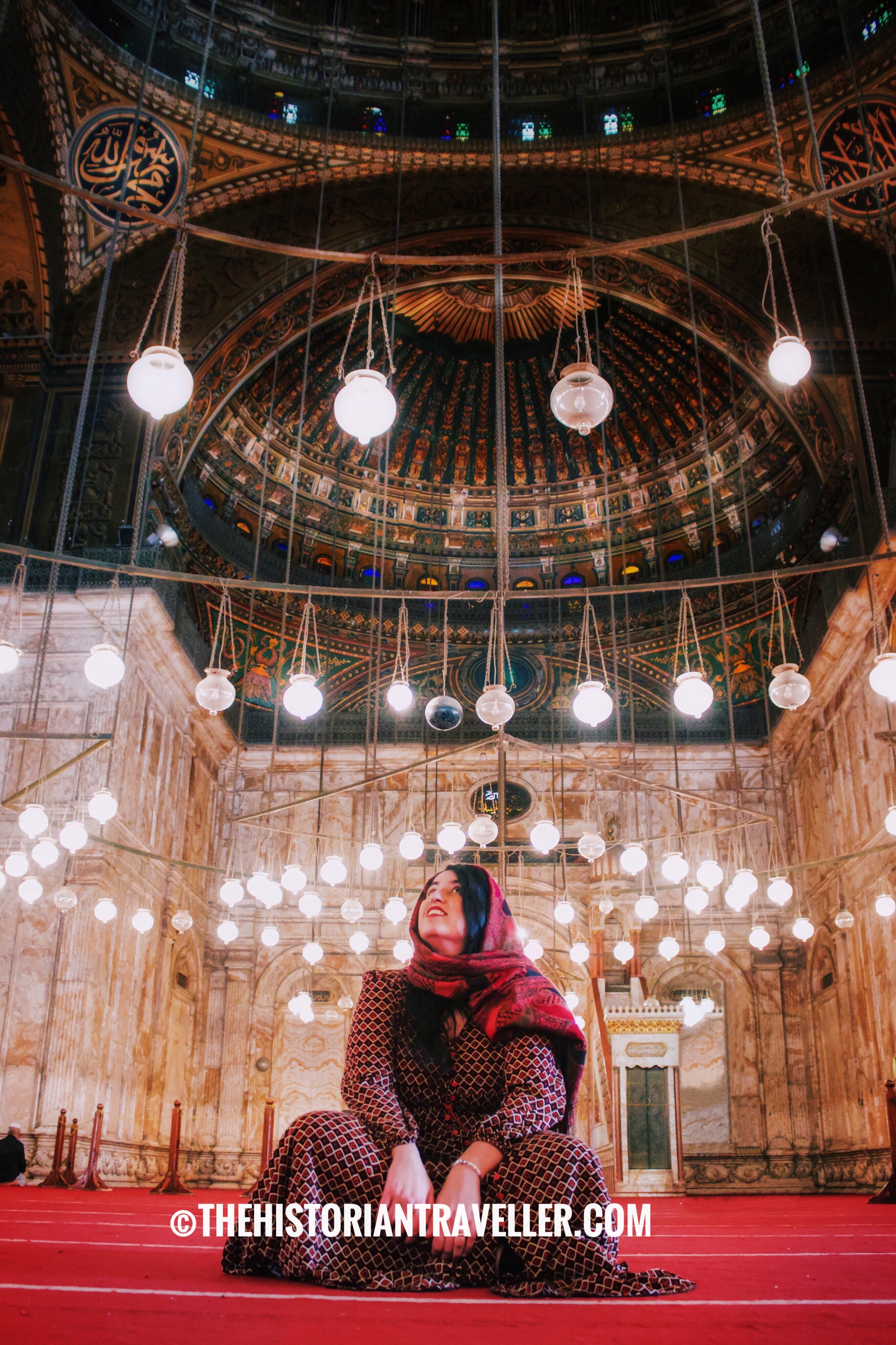
- The Saladin Citadel is situated at the top of Mokattam Hill. The precise address is Al Abageyah, Qesm Al Khalifah.
- If you are coming by taxi, and your driver don’t understand the location in English, use its Arabic name Qalaʿat Salāḥ ad-Dīn – قلعة صلاح الدين
- The cost of a Uber from Giza is of about 71-93 LE (£ 3,5 – 4,5). The ride may take between 36 and 50 minutes depending on the traffic.
- The entrance ticket is LE 140 (70 for students) £6,5 circa. There is a different price for special night visits. This is LE 160 ( 80 for students) £ 7,5 circa.
- The student ISIC card is valid but if you look older than 20 years old, the guy at the ticket counter start complaining that you can’t use it. OBVIOUSLY, IT’S NOT TRUE. If you are a student, have an ISIC card and currently pay taxes at your university, you can obtain a student discount. Don’t let the guy intimidating you. Insist to have your rights respected.
- Wear conservative clothes. Don’t go in shorts and don’t even try to wear sleeveless t-shirts if you are a woman. You are inside a Muslim location and you must respect the dress-code. Women should cover their head with a scarf inside the mosques (is not compulsory but highly recommended).
- Remember that is forbidden to wear shoes inside all the mosques and sacred adjacent courtyards. If you don’t like to walk barefoot, bring a pair of socks.
- The Citadel is open MON-FRI 8 am-5 pm and SAT-SUN 8 am – 4 pm. During Ramadan the complex closes at 3 PM.
- Friday prayers start at 12 pm. You can still visit the citadel but it’s not recommended. The place is quite busy and you may disturb the prayers wandering around.
- There might be “unofficial” guides attempting to approach you for guiding you around. Kindly refuse and go on.
- There are toilets situated near the Al-Nasir Muhammad Mosque. You won’t find either toilet paper or soap. These are under the control of the cleaning lady/man who will give some to you for a small tip. 5 LE are usually a good tip in these occasions.
- You will pass two different types of security checks. A body scanner at the first entrance gate near the main road and a bag/body check near the ticket counter.
- If you want additional information for your Egypt trip read my insightful guide here!
What to see at the Cairo Citadel
The Saladin Citadel is bigger than what you expect. A perfect detour of the entire complex can easily take half of your day; for this reason is better to plan in advance what sections and buildings you want to see. There are a total of three museums and three mosques open to the public but you can wander also around the walls and beautiful courtyards adjacent to the main structures.
Al-Nasir Muhammad Mosque
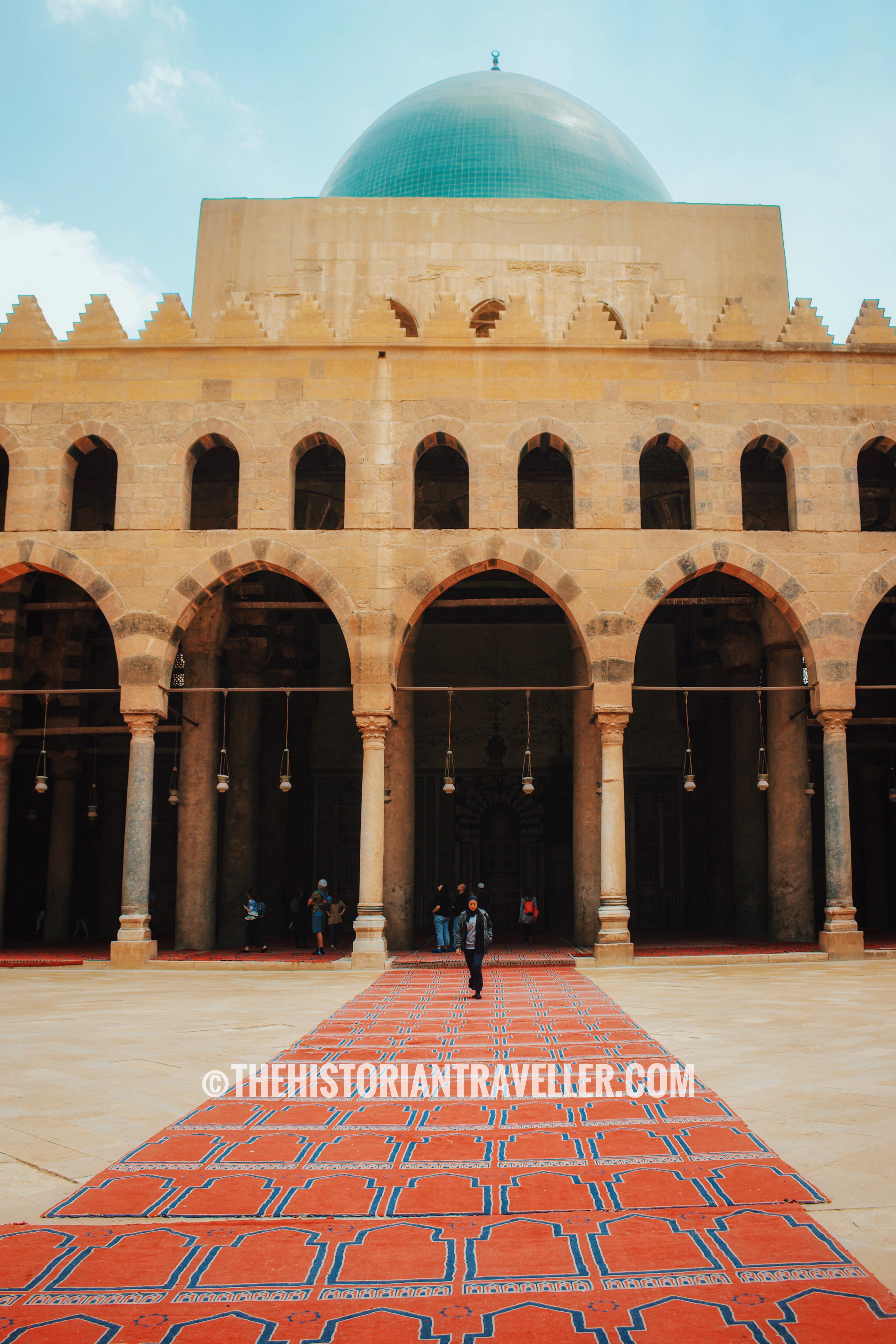
Brief History
The Al-Nasir Muhammad Mosque is the first of the three mosques you will find on your way coming from the entrance gate. It’s the oldest mosque of the Citadel and one of the few surviving buildings belonging to the medieval period. The construction of the mosque dates back to 1318 (with a big renovation done in 1335) and the architecture is typical of the Mamluk period. Commissioned by the sultan Al-Nasir Muhammad to perform as a royal mosque, the building can host more than 5,000 people.
At the time of its construction, the mosque was considered one of the wealthiest places where to pray and work in Cairo.
Architecture
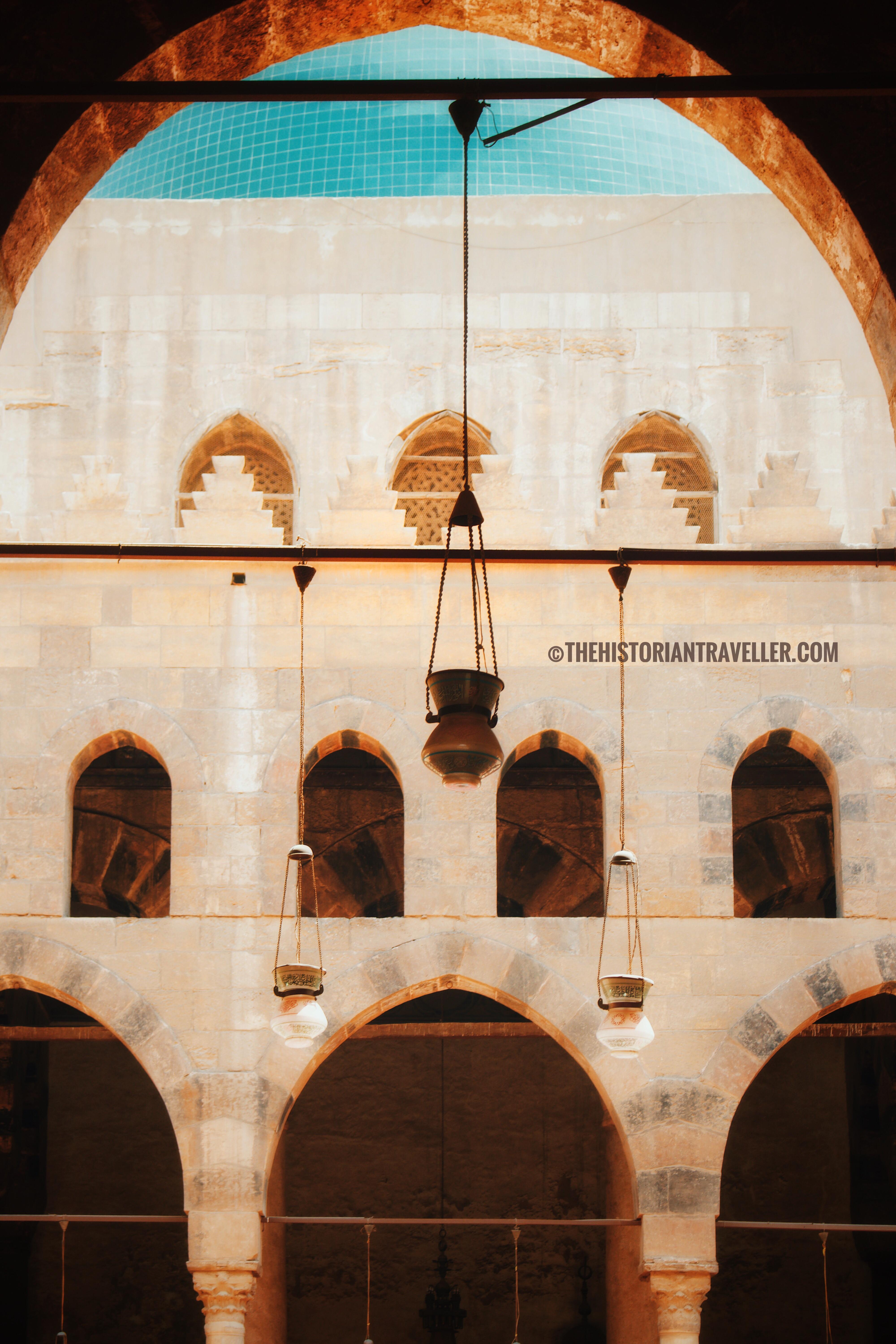
Despite the austerity of the exterior architecture, which does not feature any decoration or carving, this mosque is one of the most unique places to visit in the entire Cairo. This because it feature ancient Persian architecture never seen in any of the mosques built in Cairo. In fact, the sultan Al – Nasir Muhammad hired an Iranian architect from Tabriz to build the minarets according to a different architectural style than the one used in other parts of the mosque. Luckily for us, these minarets are still surviving and visible in all their glory! The mosque features also a beautiful free-standing hypostyle built around the inner courtyard.
What not to miss at the Al-Nasir Muhammad Mosque at the Cairo Citadel
The Persian Minarets
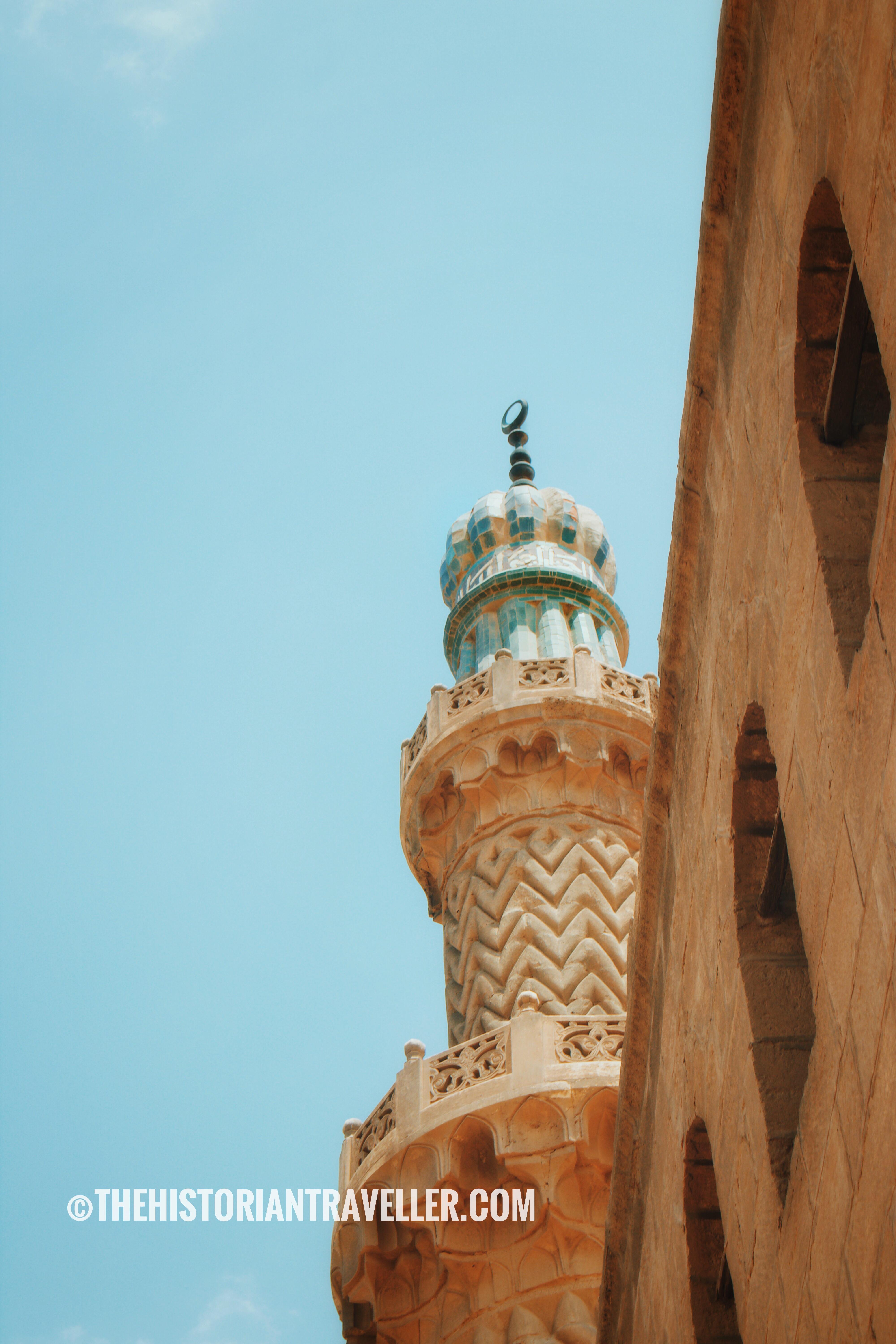
As already said, the Persian minarets built in the western and north eastern sides of the mosque are something you really need to look up. In fact, you won’t find any other similar example of these in Egypt! Yes, you’ll need to go to Iran to find some similar ones. The minarets have a bulb shape that is covered with green, white and blue mosaics. However, while the western minaret features also an inscription from the Quaran built in white faience, the northeastern one is without carvings.
The inner courtyard
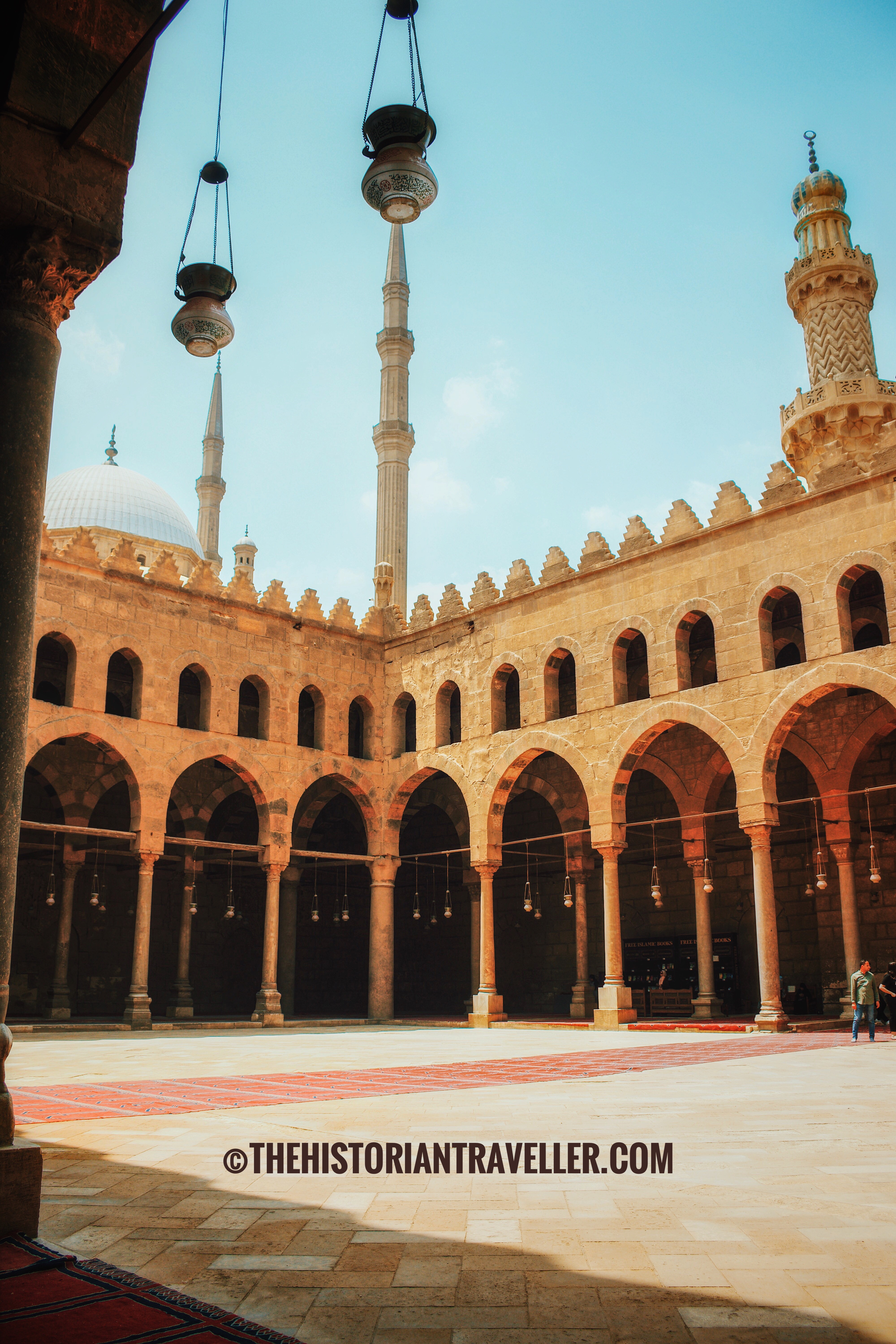
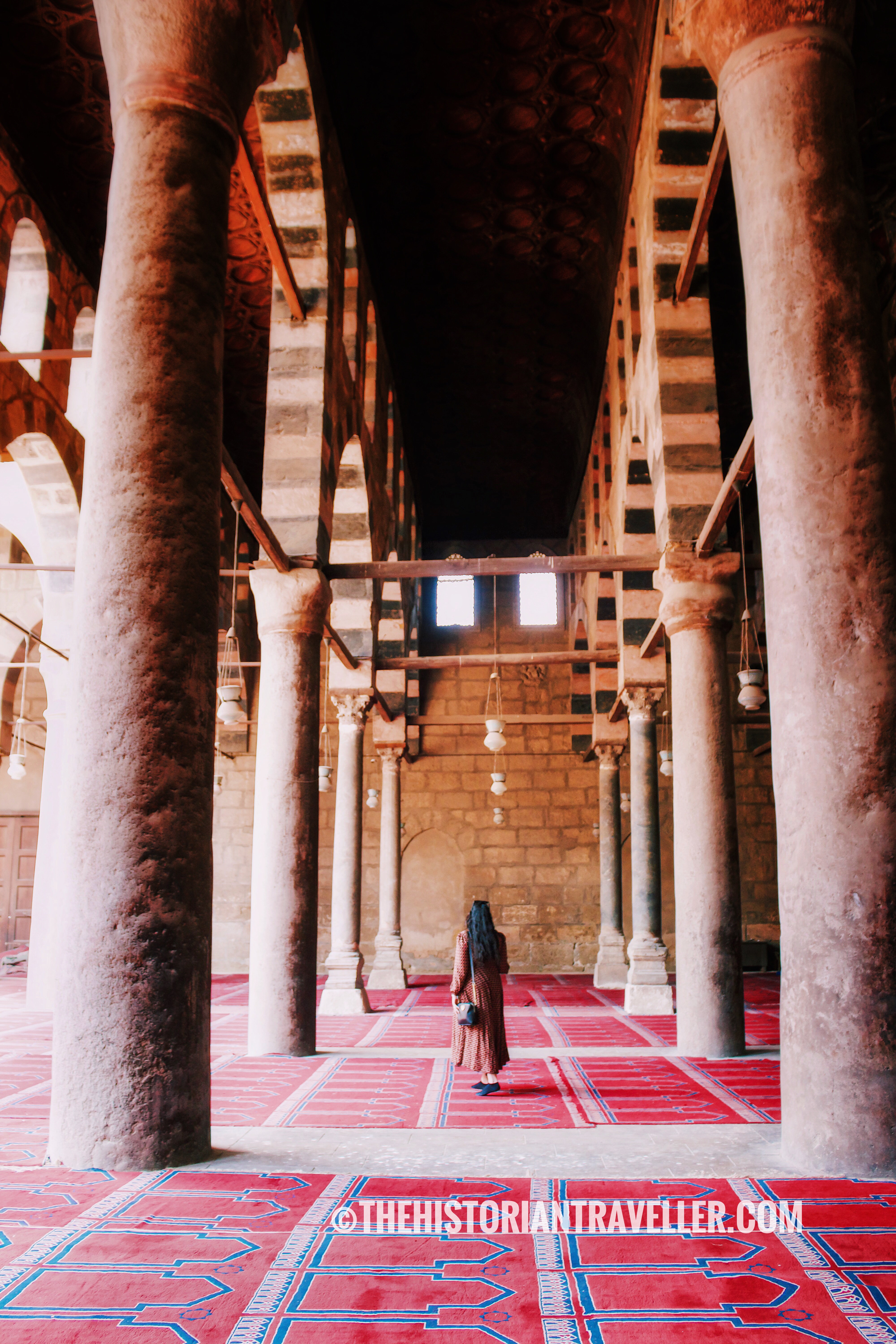
The inner courtyard is simple but the free – standing hypostyle gives it a magical appearance as you are stepping into the courtyard of a royal palace. Arcades and windows are enriched with the Ablaq technique. This style is typical of the Islamic architecture and features the mixed use of white, red and black stones.
The Qibla Wall
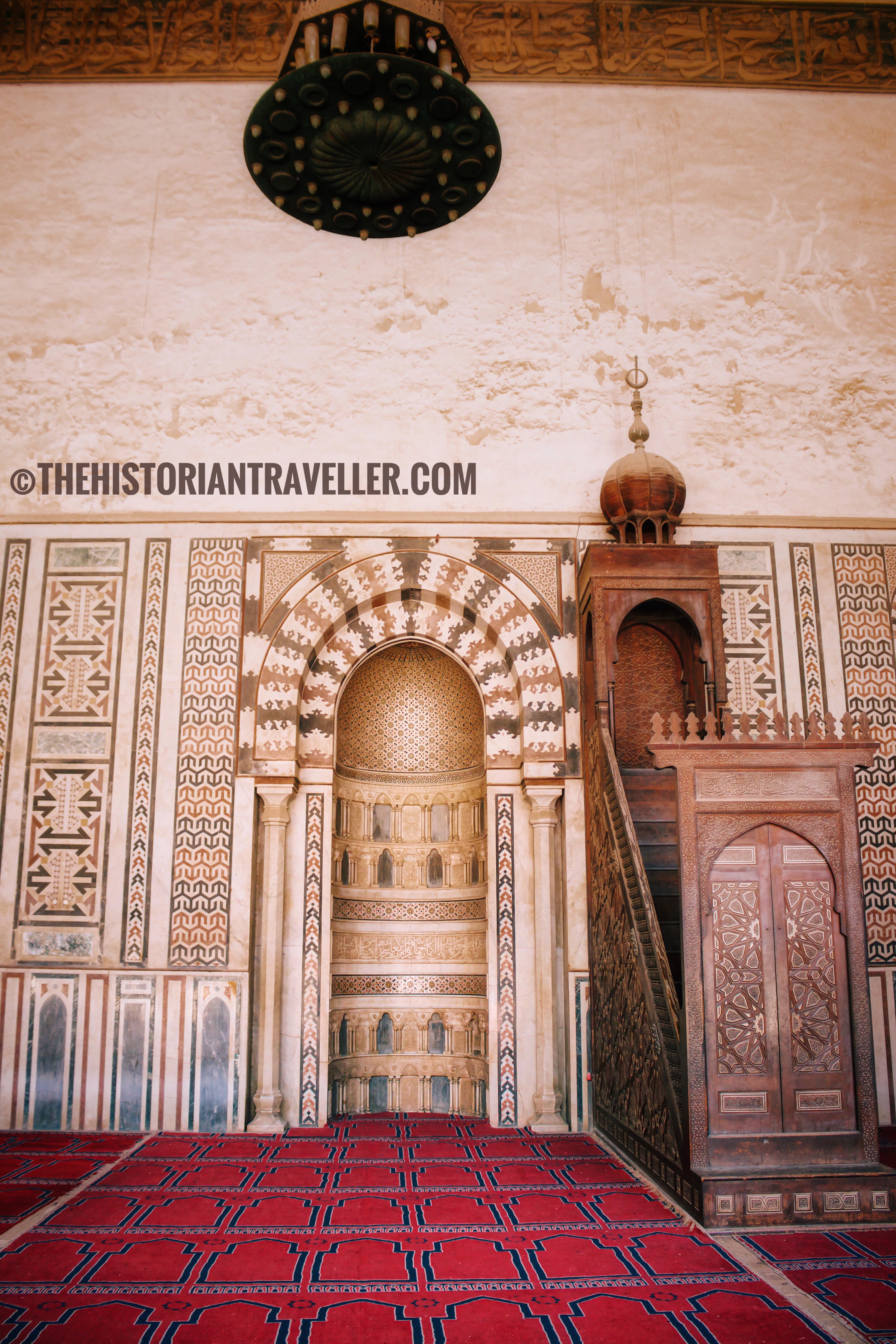
The Mihrab (aka the niche in the wall indicating the direction of the Kaaba in Mecca) show a beautiful and intricate marble decoration, featuring also a minbar used for the sermons.
The Emerald Dome
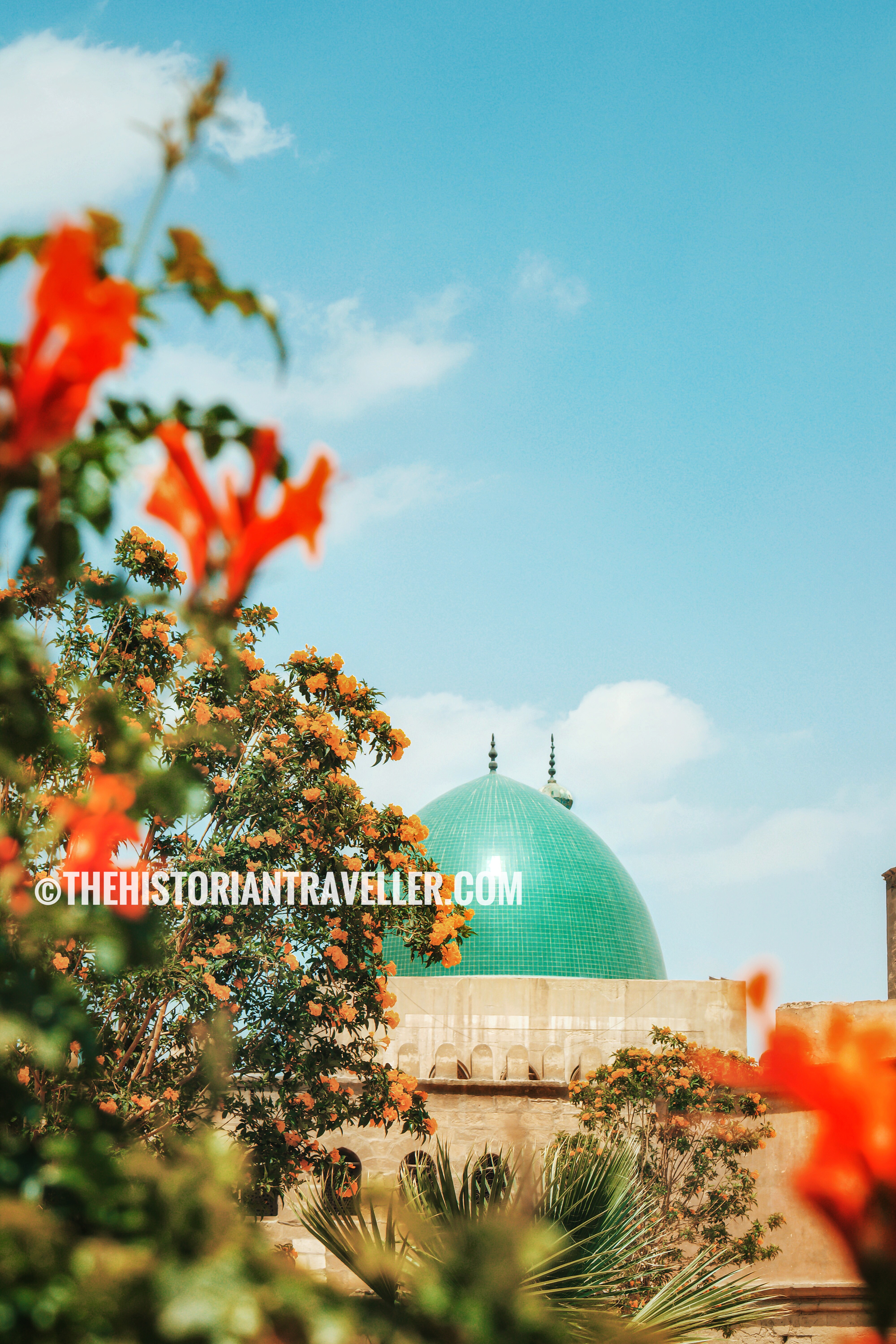
Probably one of the first things you’ll see while inside the citadel is a beautiful and shining emerald dome giving this mosque a glamorous touch. Historical narratives state that the original dome was even more glamorous than the current one. Nevertheless, this collapsed during the sixteenth-century and rebuilt with the current one. The current green-tiled dome is carried by granite columns coming from ancient Egyptian temples.
Sulayman Pasha Mosque

The mosque of Sulayman Pasha (known also as Sariat al-Jabal Mosque) dates back to 1538. Ordered by the Sultan Hadım Suleiman Pasha. It’s the first mosque of its gender to present an Ottoman architectural style. It features a central dome and a little inner courtyard. The mosque is much smaller and simple compared to the others inside the Citadel. This because it was used by the Janissaries.
The door in use today, leading directly to the sanctuary, is not the one used originally. In fact, a renovation of the mosque happened in the nineteenth century. We unfortunately did not visit this mosque because it was very late and decided to head to another part of Cairo, but if you have time it is good to pay a visit at least to see the evolution of the stylistic style in the Ottoman architecture compared to the later Mosque of Muhammad Ali.
The Mosque of Muhammad Ali
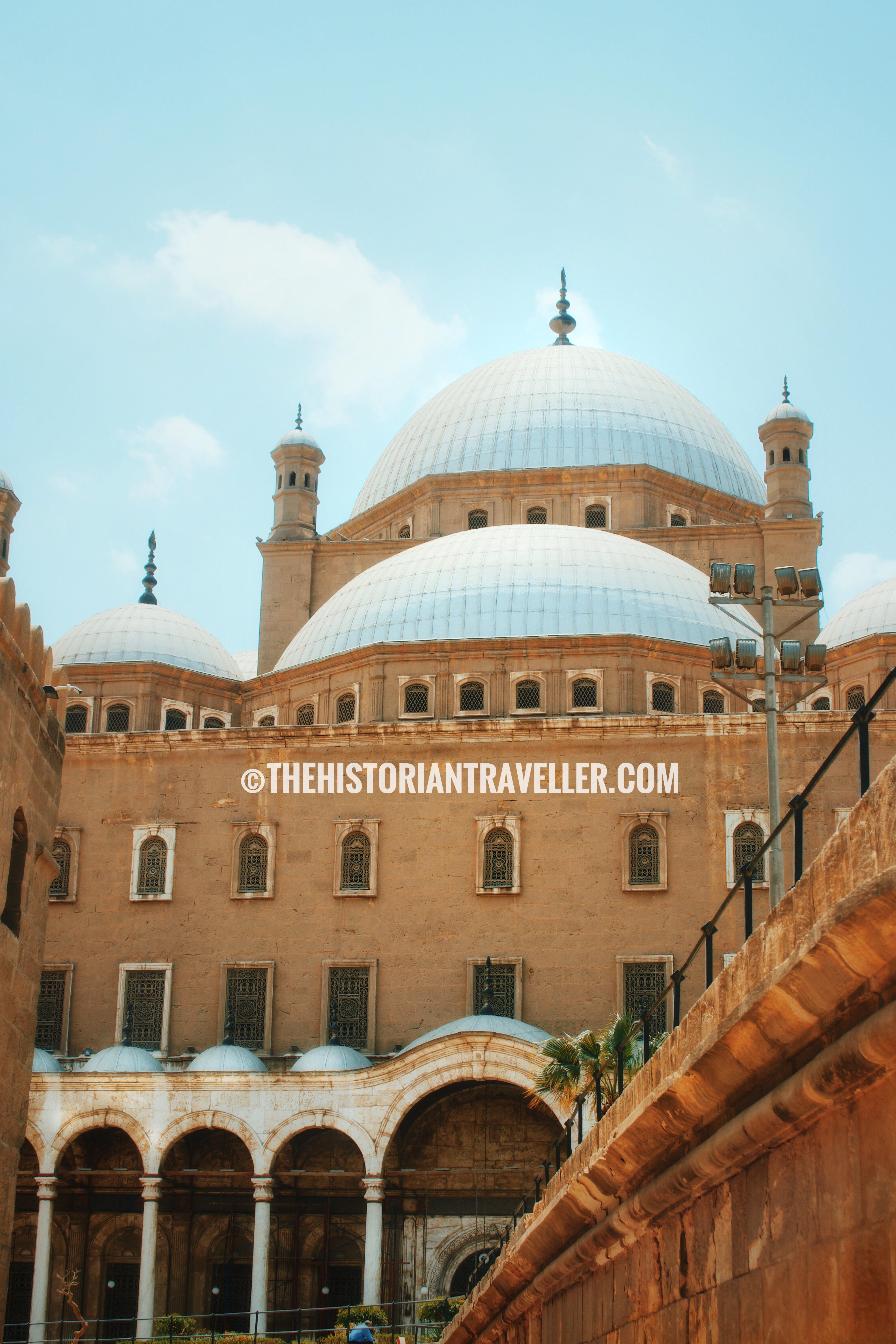
Brief History
The Mosque of Muhammad Ali is probably the most photographed (and famous) building of the Citadel. In fact, it features more than 136 stained glass windows and eighty-two meters-high minarets. These are so tall that one could see them from the other side of the city. It’s truly an architectural masterpiece.
At the time of its construction, between 1830 – 1848, the sultan Mohammad Ali Pasha wanted a mosque similar to the Blue Mosque in Istanbul. This to demonstrate at the same time acknowledgement and defiance from the Ottoman Empire. For this reason, he hired the Istanbul architect Yusuf Bushnak. Historical narrative confirms that his disagreement with the Ottoman political line did not affect his “obsession” for Turkish architecture. The mosque renovation cost in 1939 was of LE 100,000.
Architecture
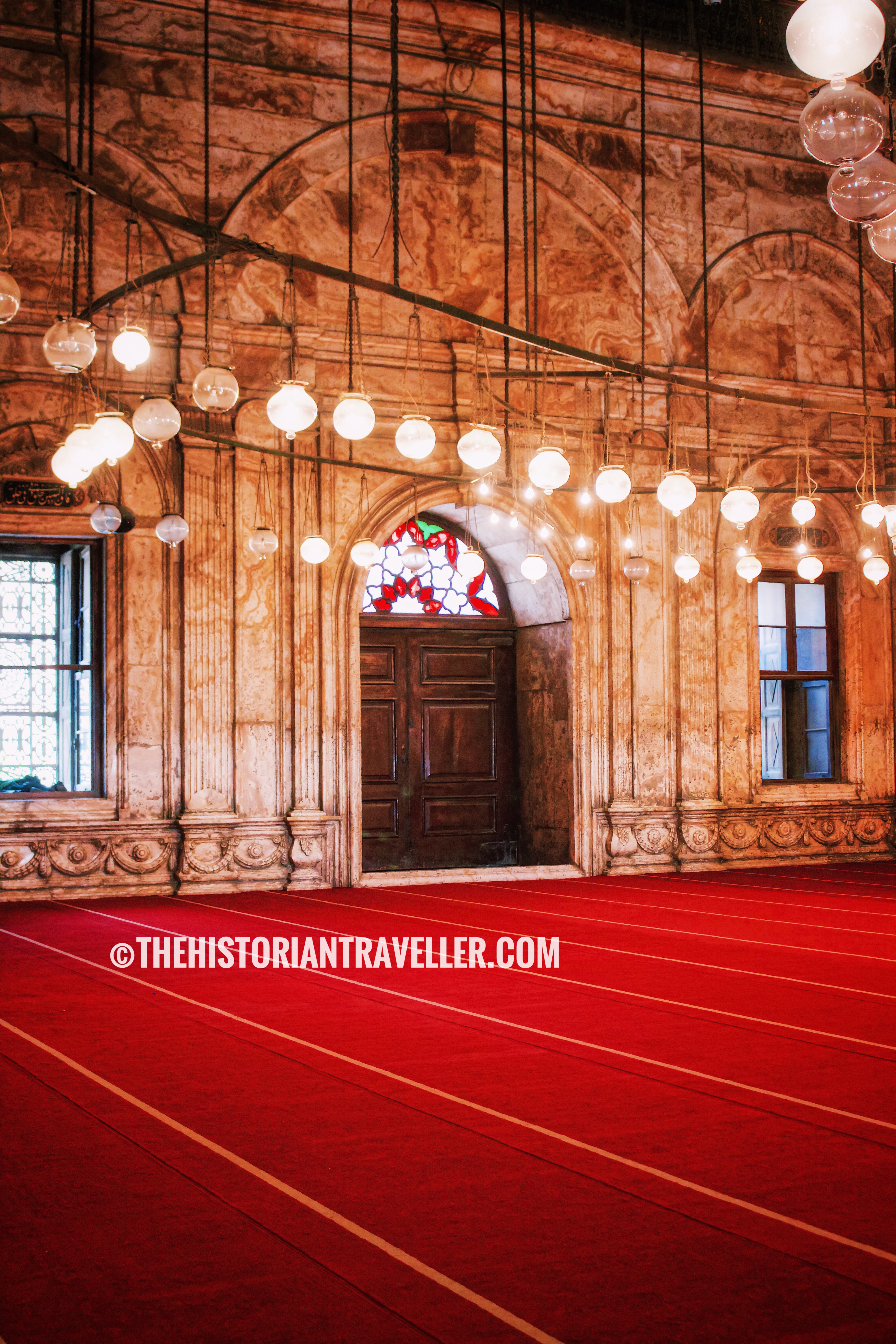
As already said, the mosque is designed with an Ottoman architectural style. The mosque was built on a plan measuring 41×41 meters. This included a central dome of 21 meters of diameter supported by four semi-domes on each side and other four small domes for each corner. Until 1957, the minarets were incomplete. Those are 82 meters tall and their construction was seen as an act of insubordination against the Ottoman rulers. In fact, only the Ottoman Sultan had the privilege of building tall minarets. Therefore, the act of Muhammad Ali Pasha was understood as a declaration of the Egyptian independence.
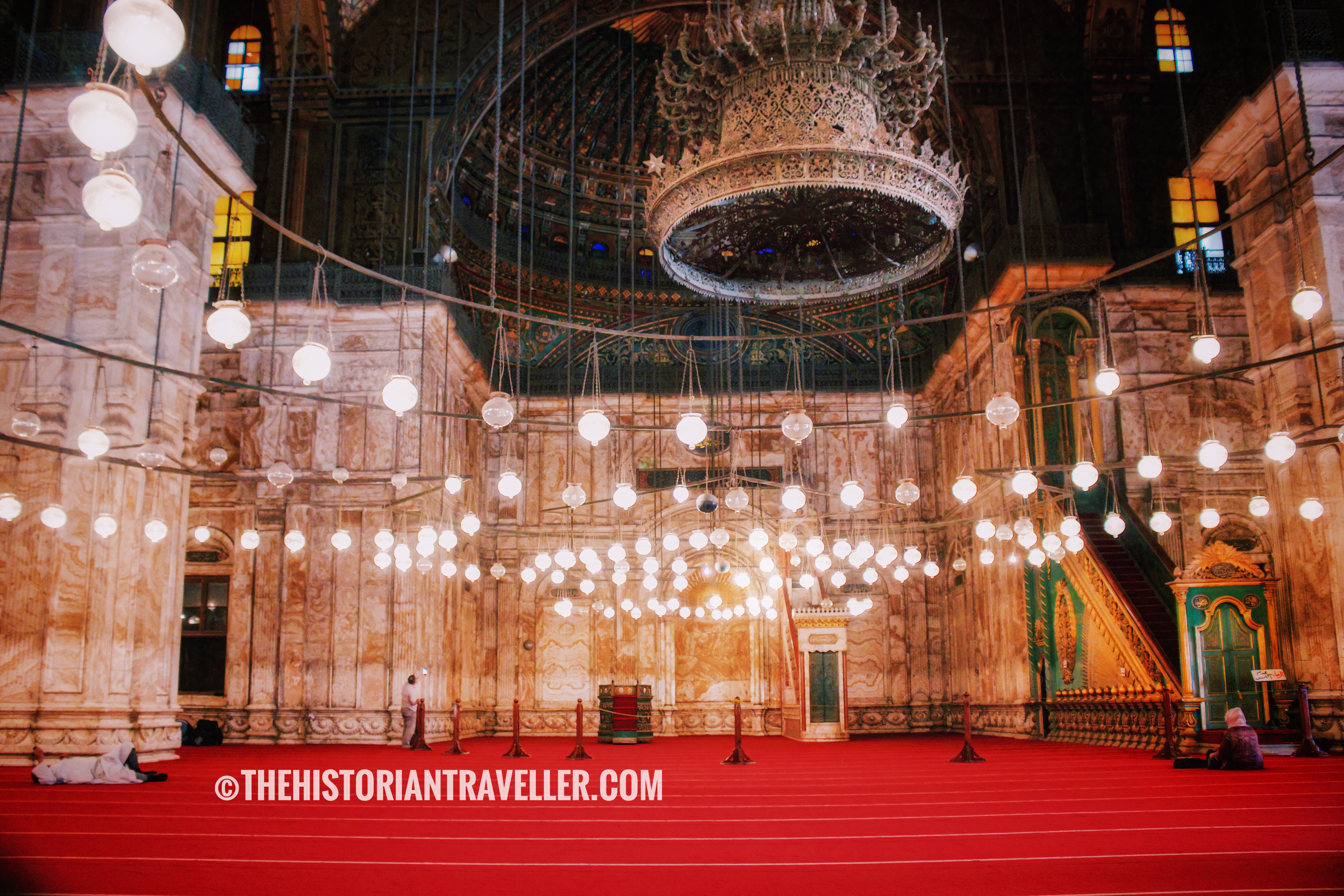
Most of the mosque features the use of limestone and alabaster, for this reason is famous also as “The Alabaster Mosque“. The interior walls are entirely built in alabaster stone on a 41×41 meters plan giving the idea of an immense space. Indeed, the mosque is able to host up to 6,500 people and the domed ceiling helps to create a feeling of space and grandiosity.
What not to miss at the Mosque of Muhammad Ali Pasha at the Cairo Citadel
The Alabaster Courtyard
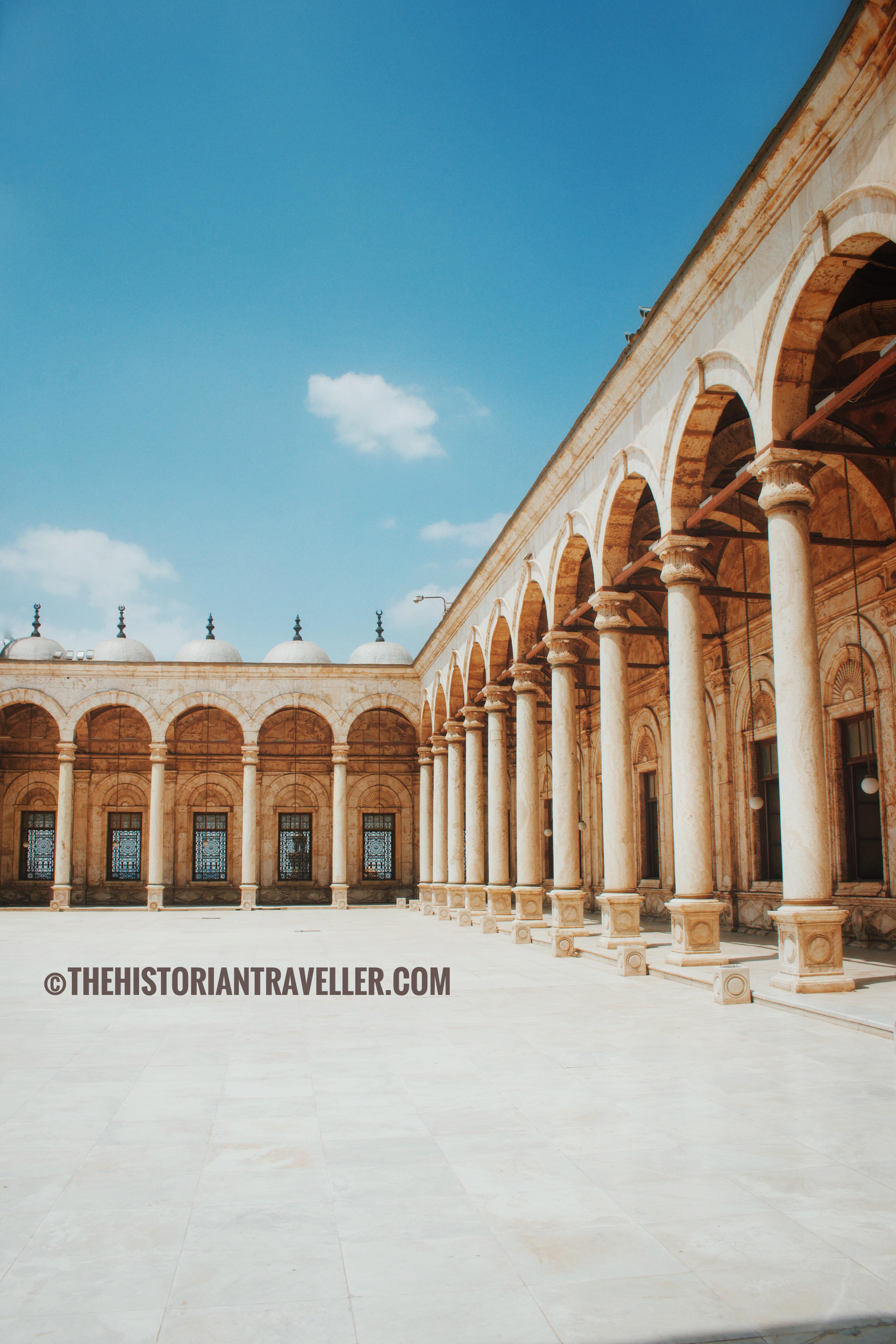
The western section of the mosque features a beautiful semi-open courtyard measuring 53 m x 54 m. The perimeter of the courtyard is actually larger than the mosque itself. It features 47 arched doorways and a central fountain to be used by preachers for rinsing before the prayers. Marble coloums supports the arcades. These are roofed with small domes and decorated with vegetable motifs in their interior part. The courtyard hosts also a clock tower that is currently under renovation. This was a gift to Mohammad Ali by the King of France Louis Philippe.
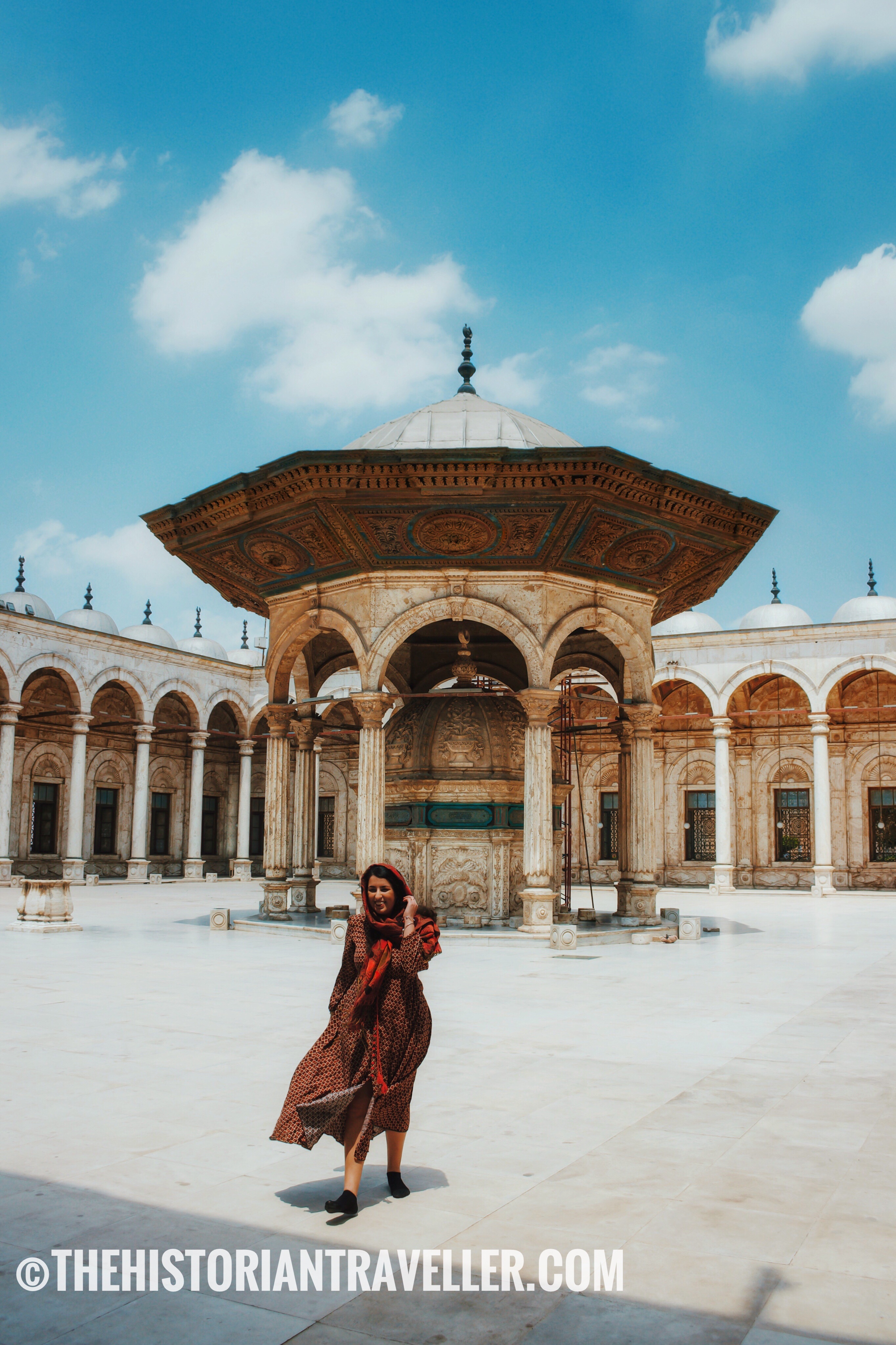
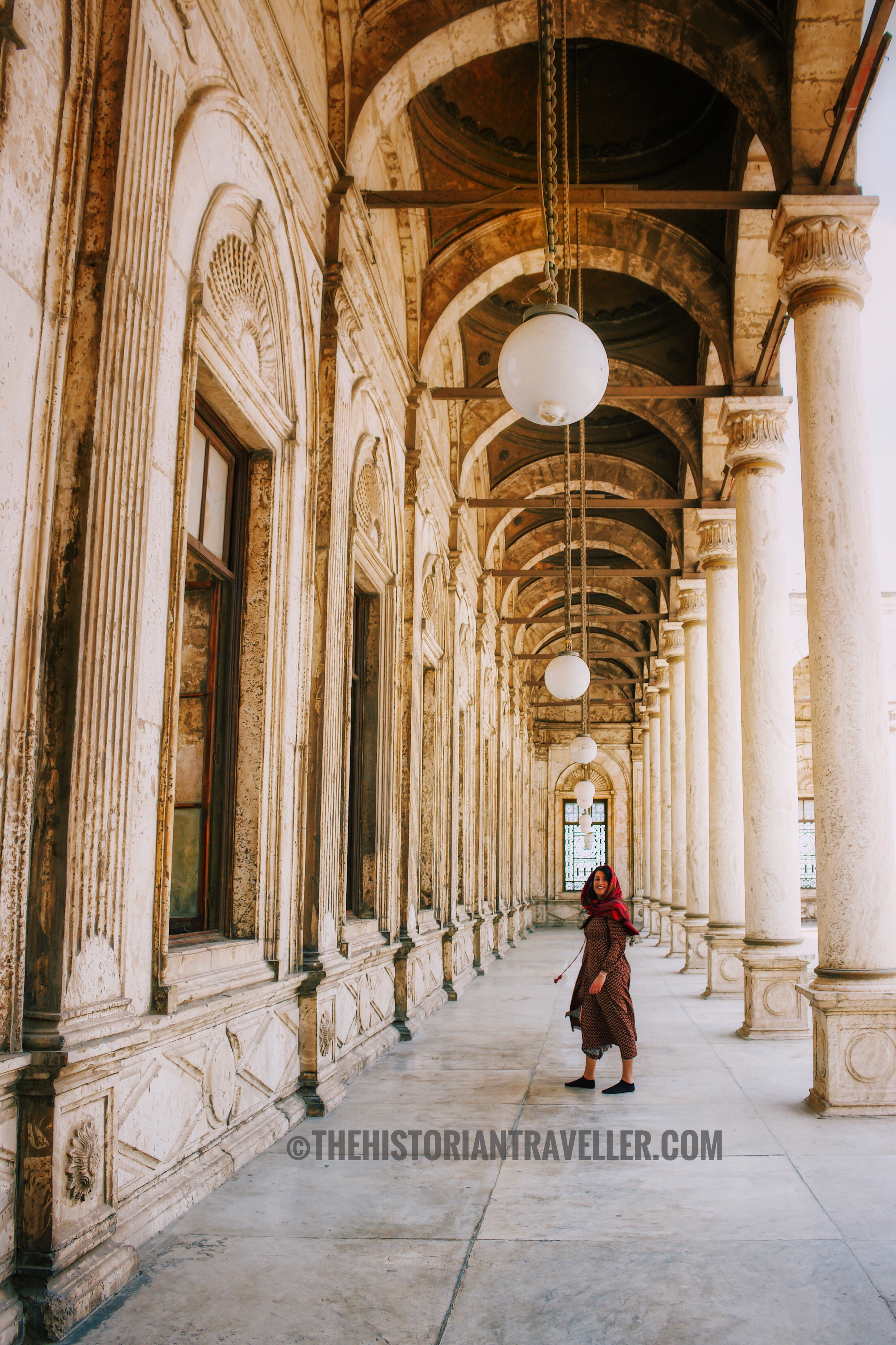
The dome decorations
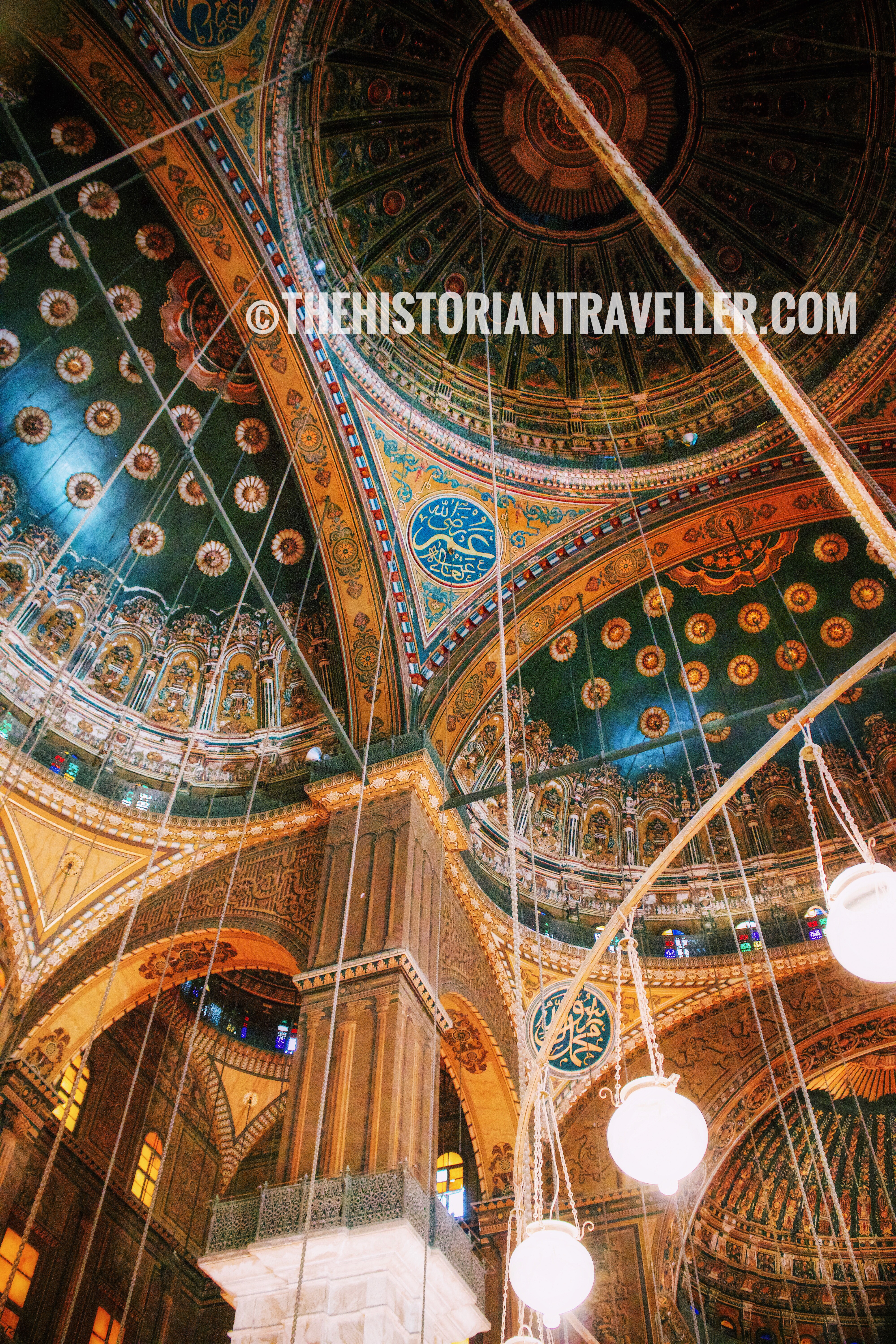
The domed roof of the mosque of Muhammad Ali is something that blew my mind! You should really take a few minutes and stay with your nose up to admire its majestic beauty. Polychrome high-relief carvings and gilding, realised in the neo-Baroque style together with natural motif enrich the domes and roof interior decoration. Thanks to more than 136 stained glasses filtering the light, everywhere you look appears different according to its exposure the time of the day you go.
The outdoor viewpoint
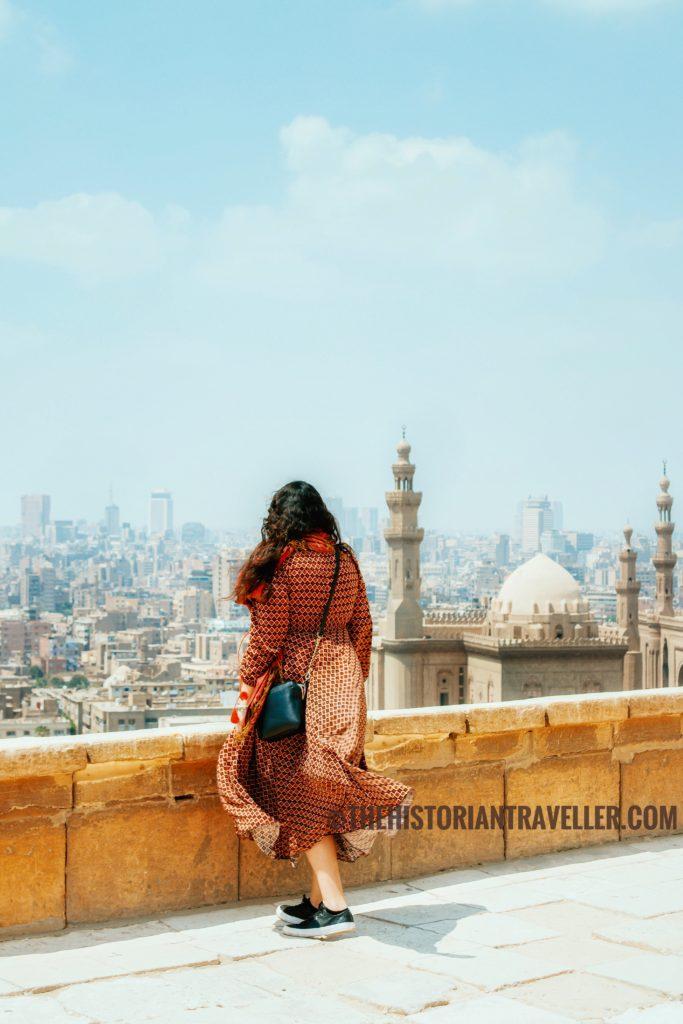
While visiting the Mosque of Muhammad Ali, don’t forget to pop a visit also to the outdoor terrace on the eastern side of the mosque. This is probably one of the best view points of Cairo and you can literally see most of the city here! Moreover, this is also one of the best places to see the mosque in its entirety! You can really appreciate the massive construction only when you see yourself in proportion to it! Look how small I am compared to the mosque (photo below)!
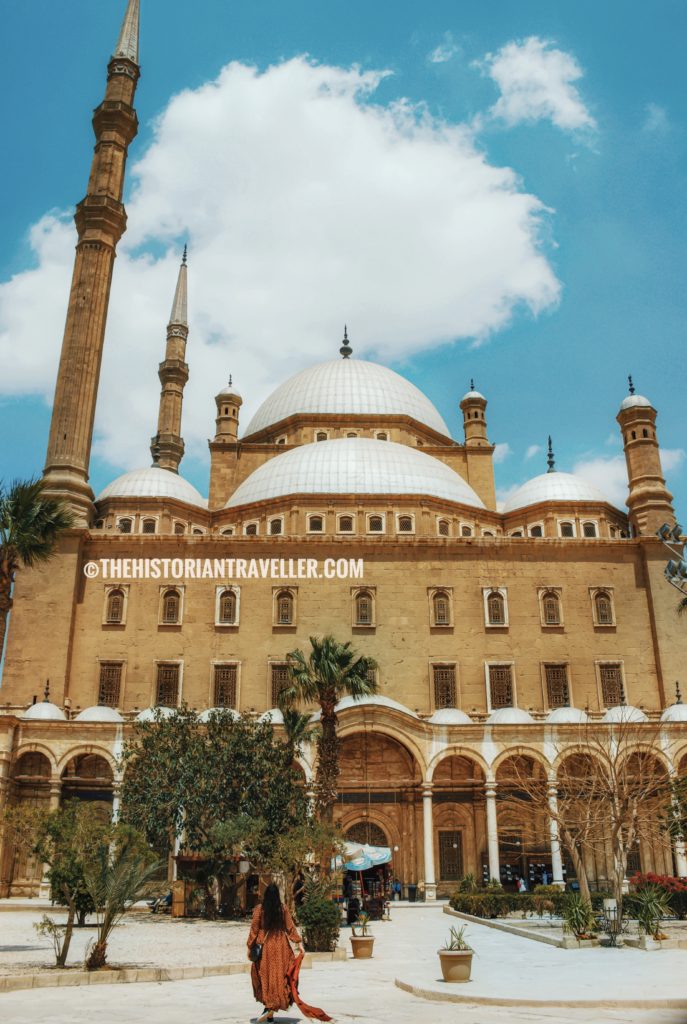
Al- Gawhara Palace (museum)
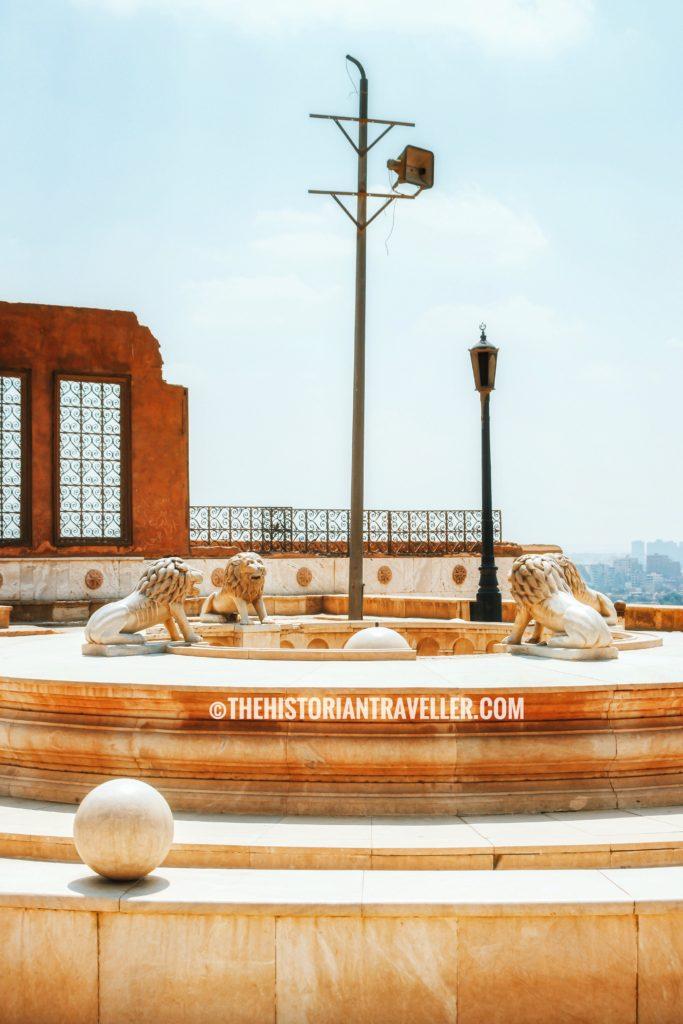
Al-Gawhara Palace is located immediately after the mosque of Muhammad Ali, in direction of the view point courtyard. Unfortunately, the palace was closed during our visit (for no specific reason). The only thing we could see was the the stunning marble fountain with four lions in the entrance porch (pictured).
Muhammad Ali commissioned the Al-Gawhara palace in 1814. The museum is famous also as the “Bijou Palace” because of its architecture styles and opulence of the interior decors. In fact, the architectural style of the palace follows indeed both European and Ottoman tendencies of that period of time. A fire in 1872 damaged heavily the palace structure and forced the closure of the whole residence until 1983 to allow a complete renovation.
I am not sure the reason why the museum wasn’t open during our visit at the citadel. Possibly because of the low affluence of tourists. However, I was very curious of visiting it. If you have time, and it’s open, it surely deserves a visit!
Other museums inside the Citadel
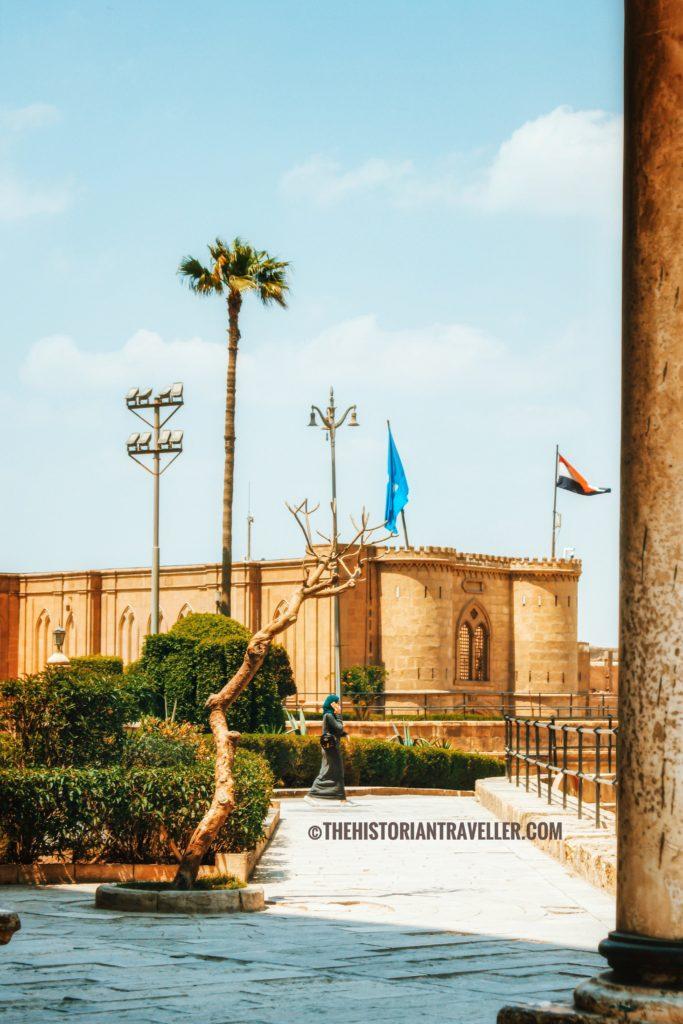
If you are passionate of museums and have plenty of time to explore the Saladin Citadel you can pay a visit to three other museum included in your ticket.
- The Carriage Museum – It was inaugurated in 1983 and renovated in 2013. This museum hosts a wide collection of Royal Carriages, unique in their genre.
- The Egyptian National Military Museum is in the Harem Palaces in north-western area of the Citadel. Mohammad Ali built the palaces in 1872, but the museum opened officially in 1937. In addition to the main exhibition disposed on three different floors, the museum features also an open-air display of statues and military transports.
- The Police Museum – less known than the other three museums, the Police Museum is located within the old prison of the Citadel. The museum shows an interesting display of weapons and cases reconstruction. There is also a history of the evolution of the Police forces in Egypt since the Pharaonic Period (of course during that period the Egyptian security forces were not known as “police”).
….and that’s all! I hope that with this mini guide is telling you everything you need to know for a perfect detour of the Saladin Citadel! If you have any questions, do not hesitate to ask!
Looking for some more inspiration for your trip to Egypt?
Look How to Plan a fabulous trip to Egypt and Tour of the Islamic Cairo!
Would you like to have all these info with you? Pin this Info-graphic for the future!
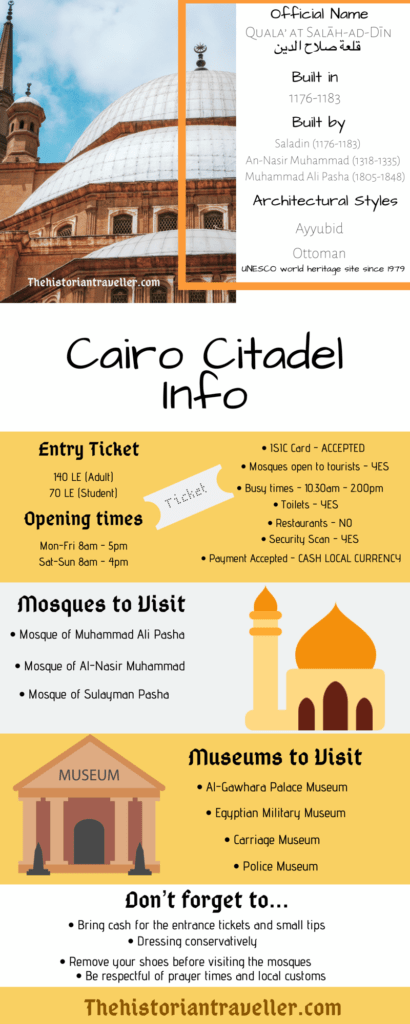
Plan your trip to Egypt
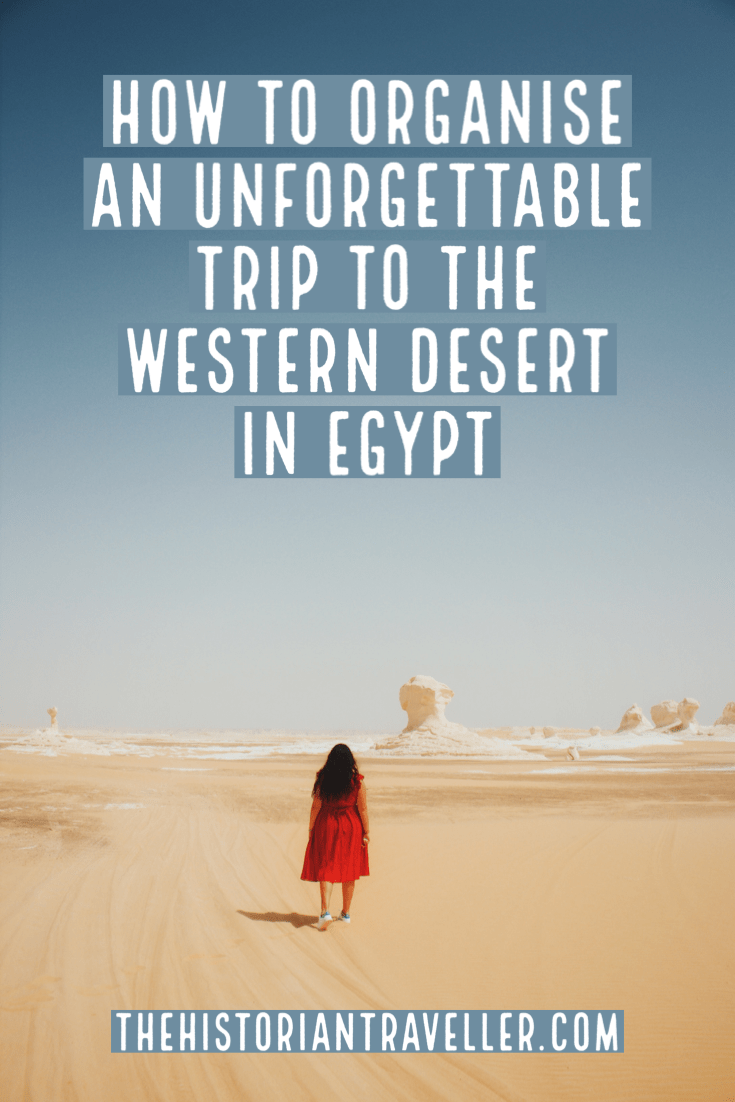
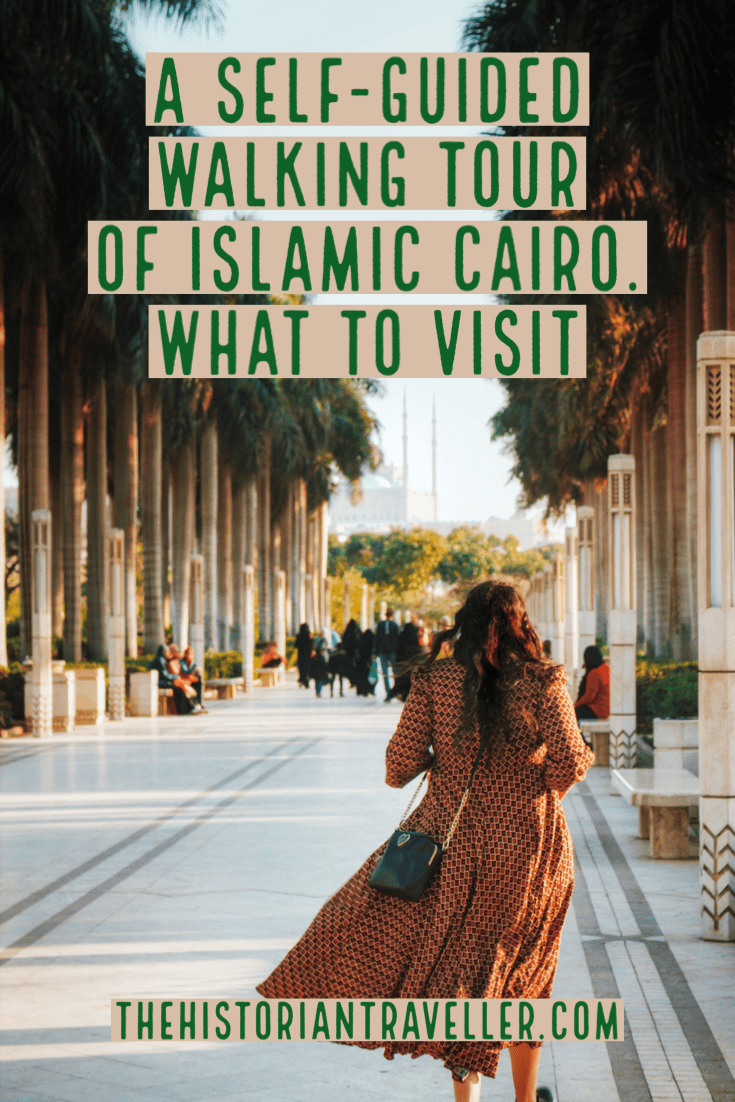
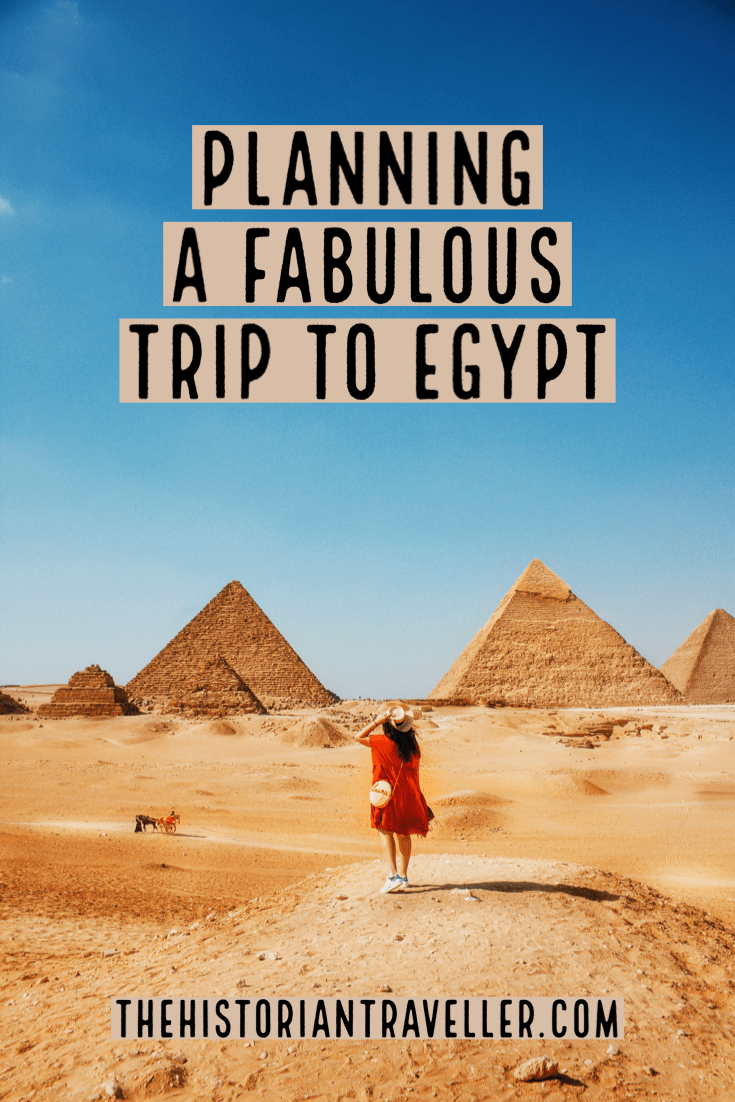
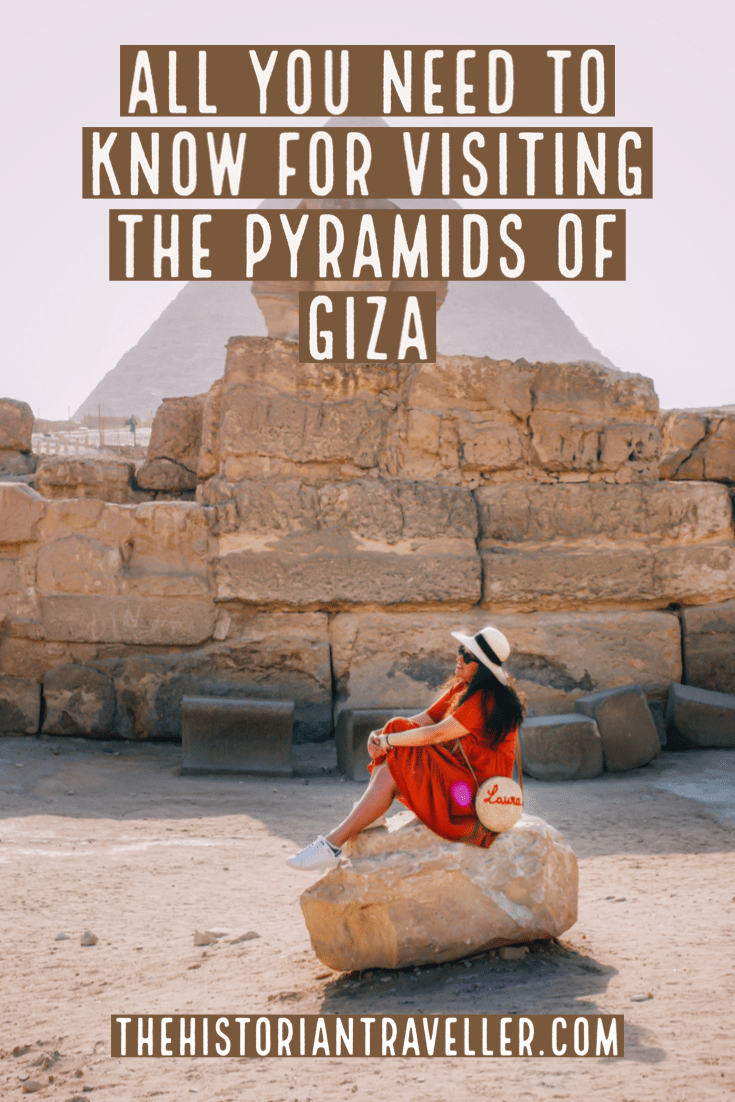
Loved this post? Pin it for later!
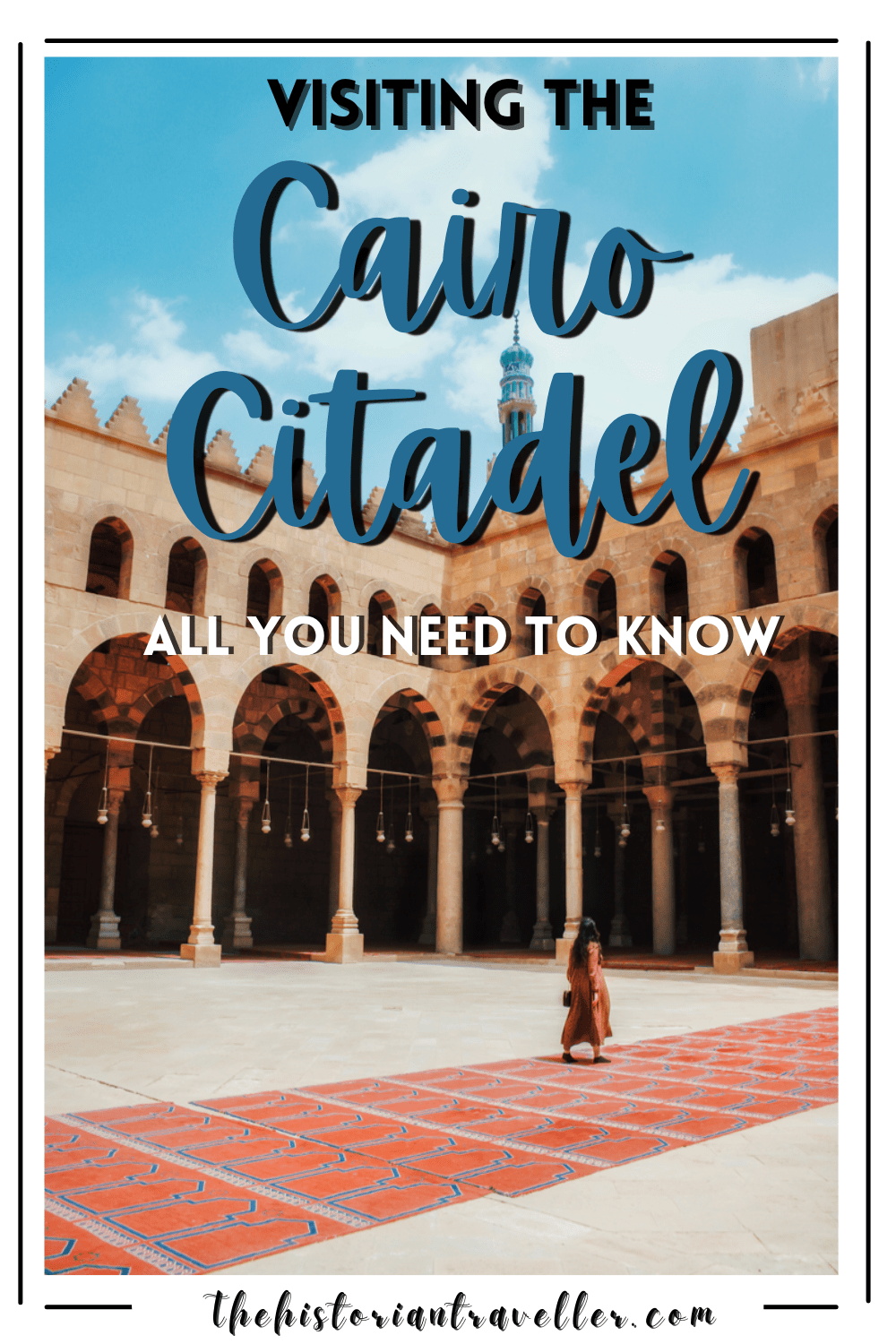
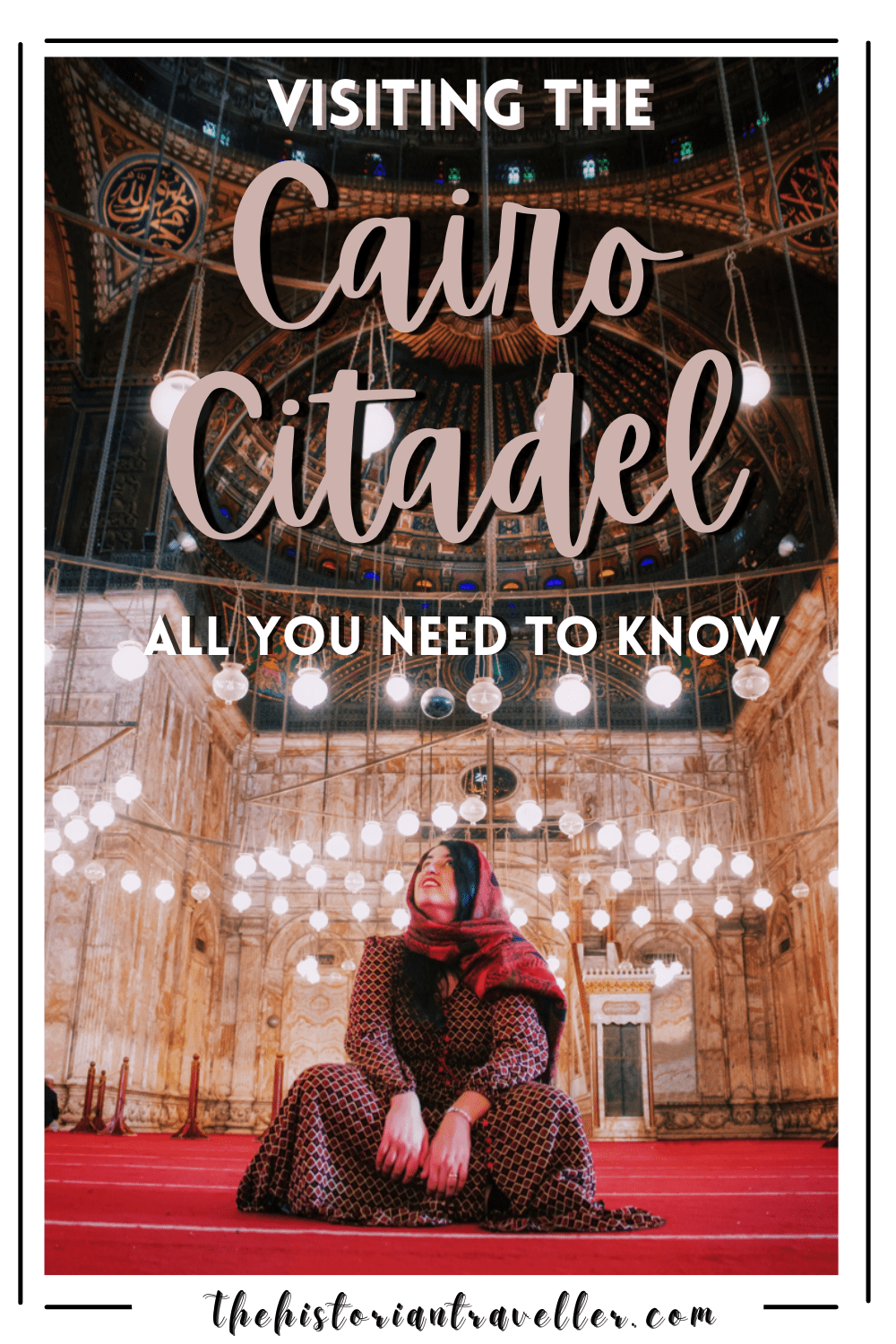
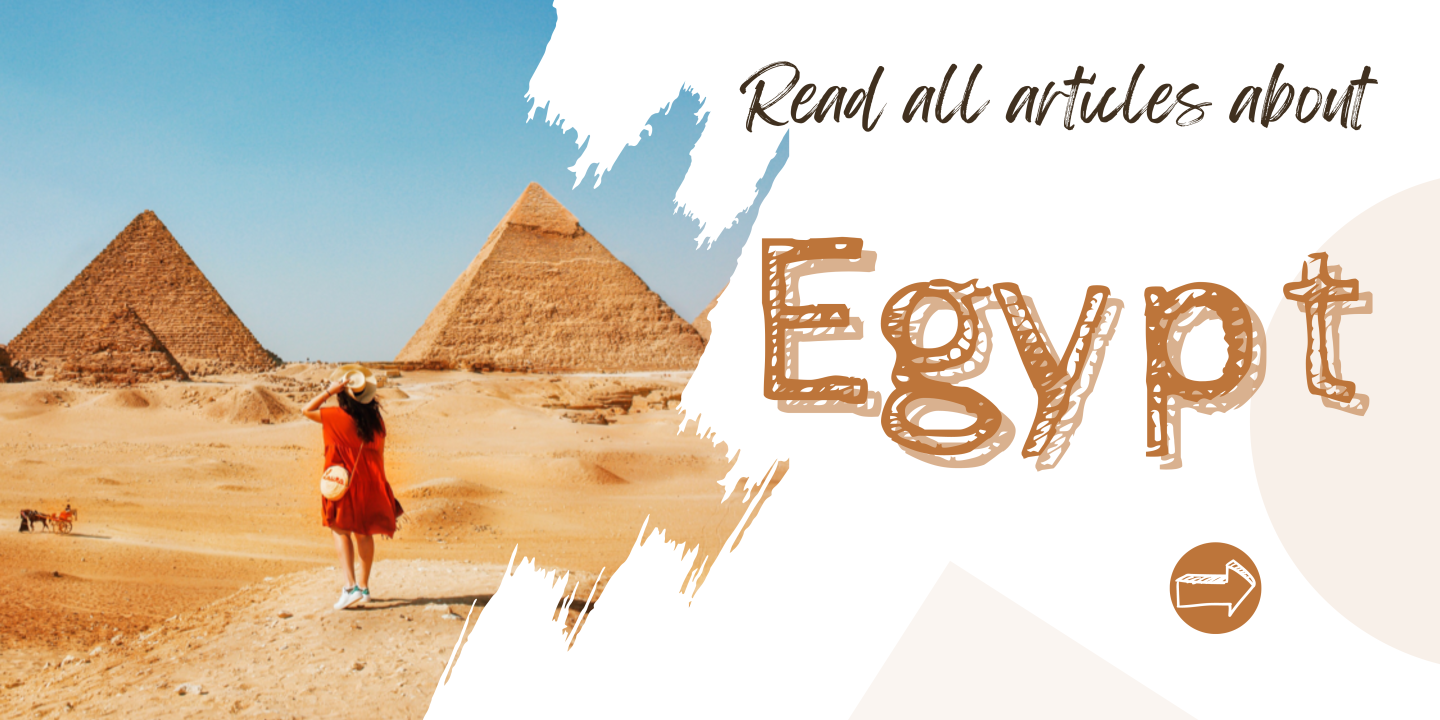
Were you allowed to bring your camera inside?
Author
Hi Julie, yes you can bring it if not visiting during the prayers.